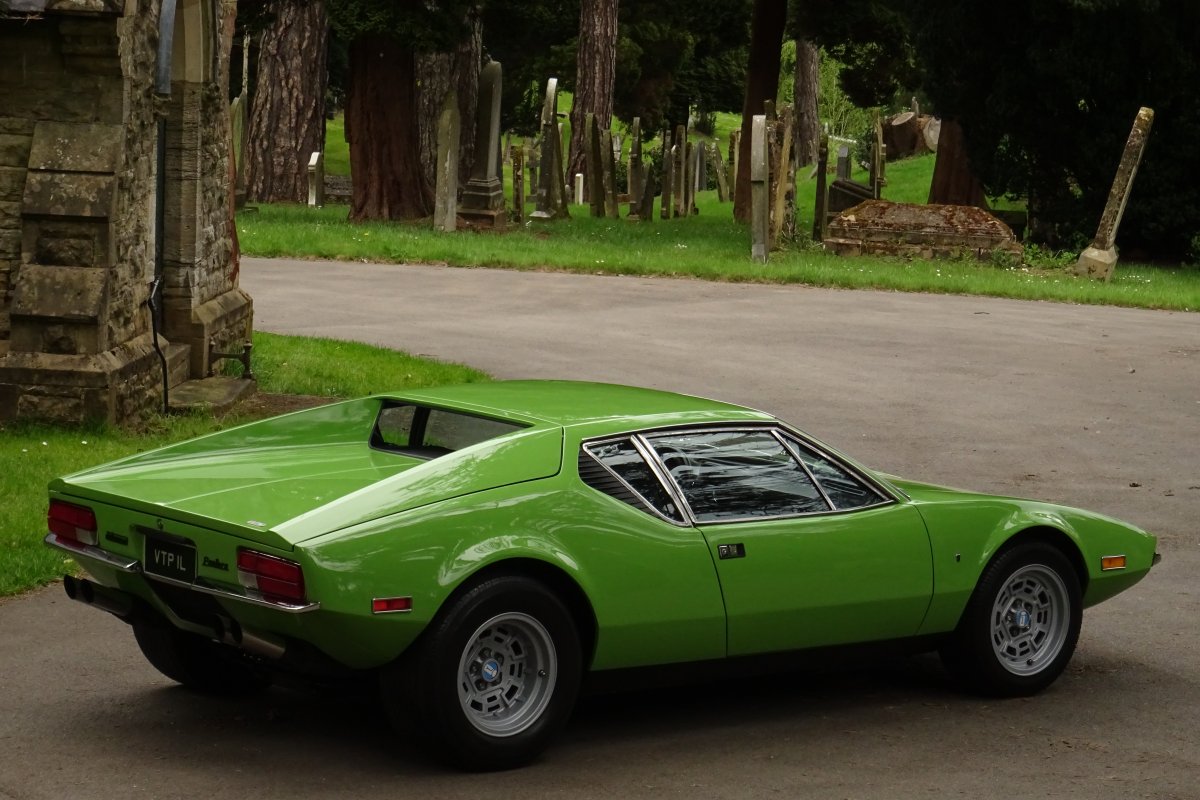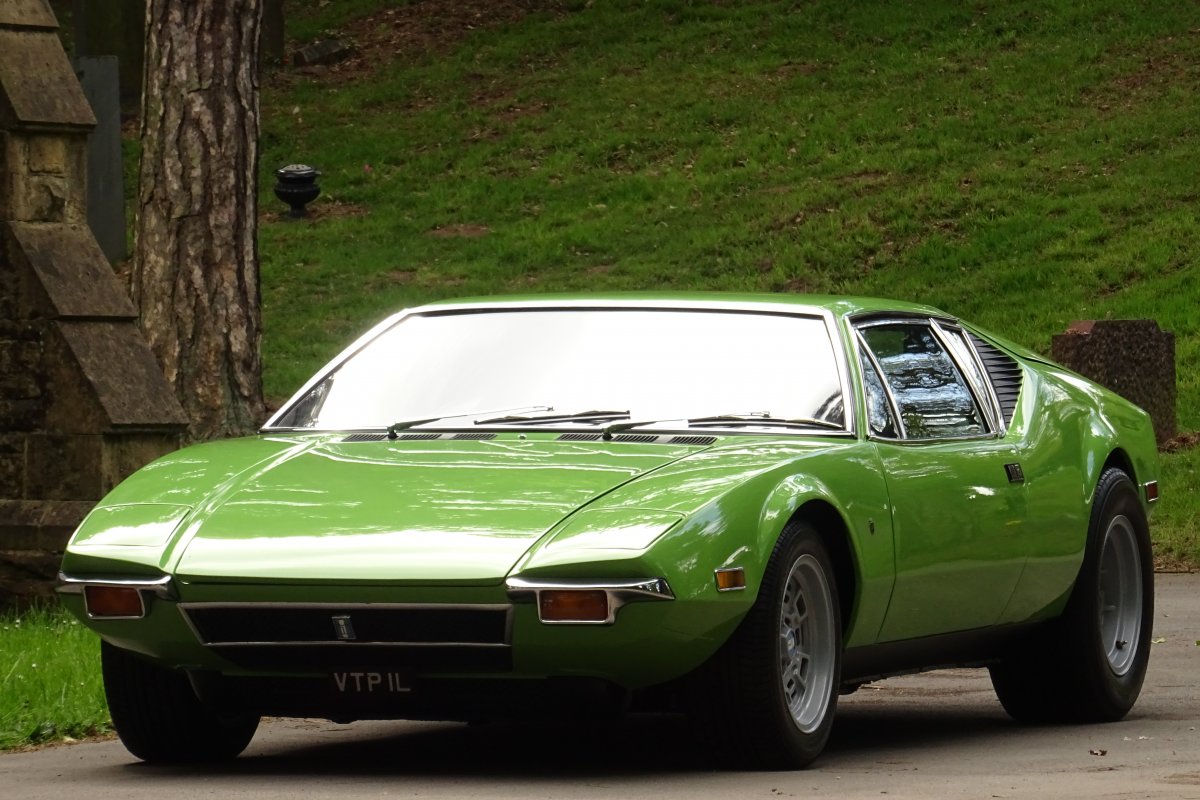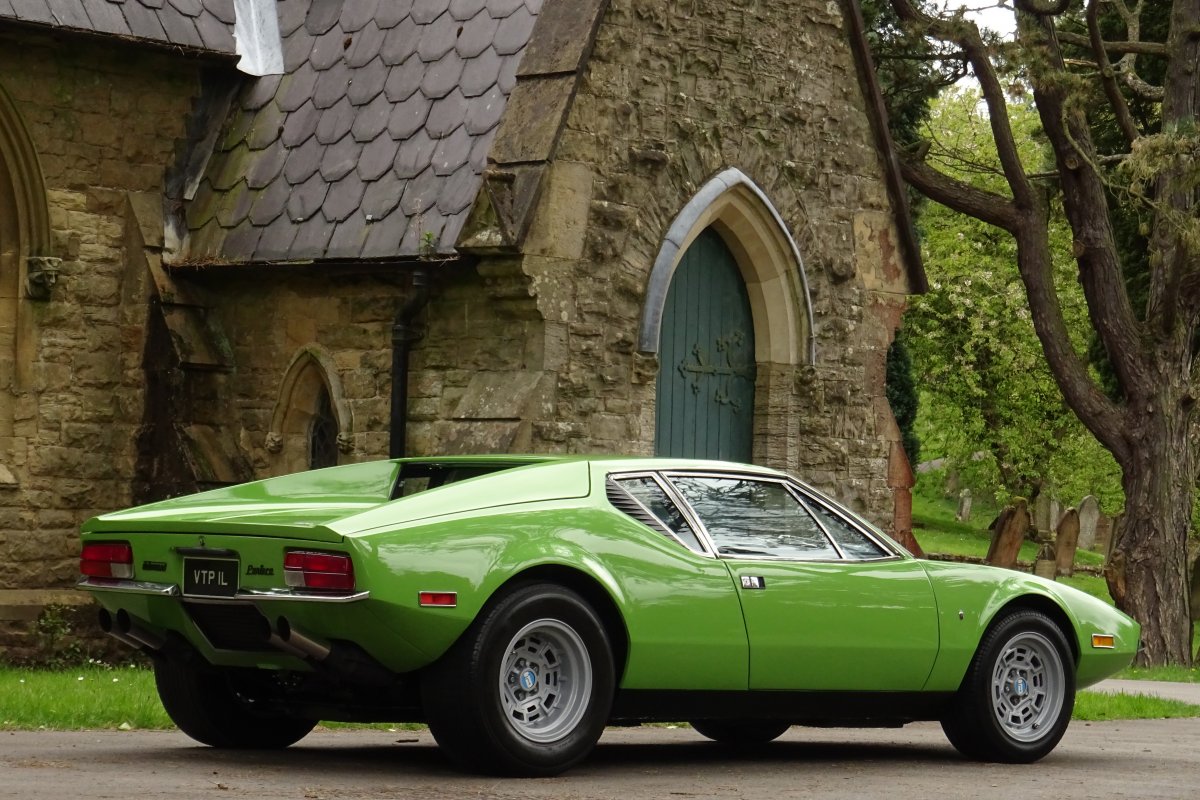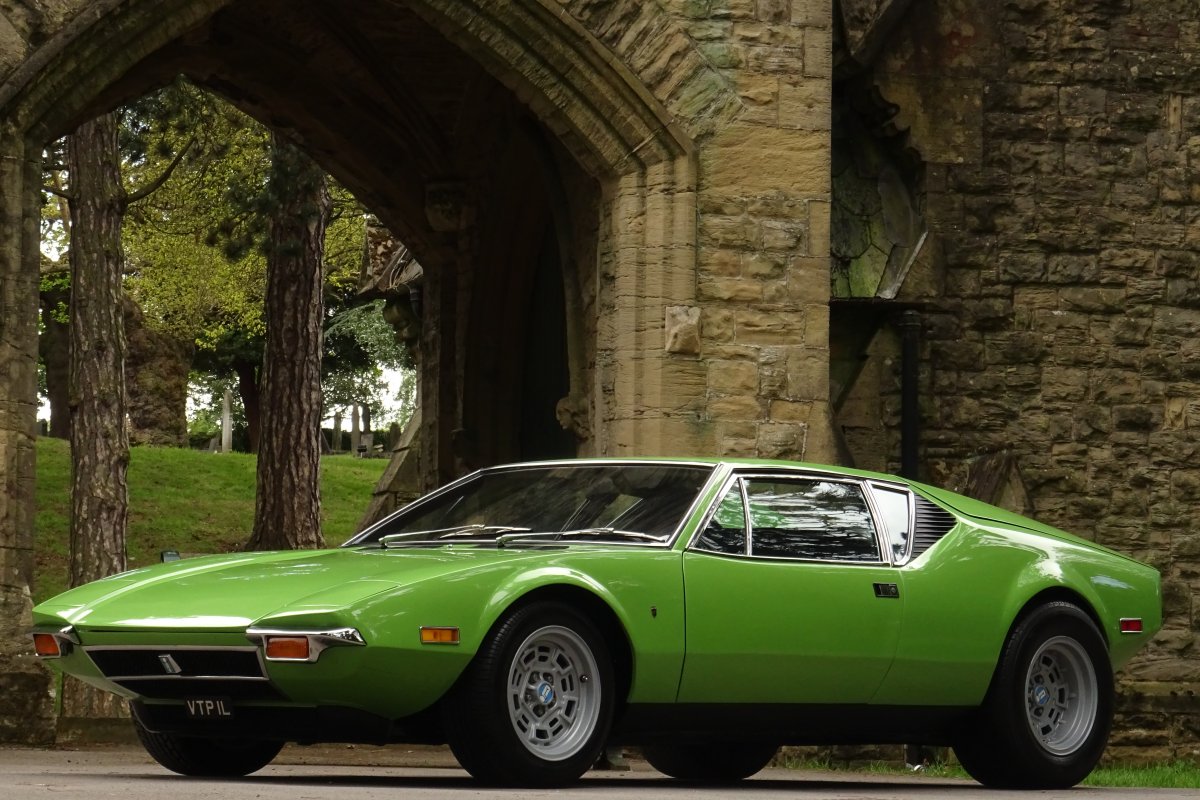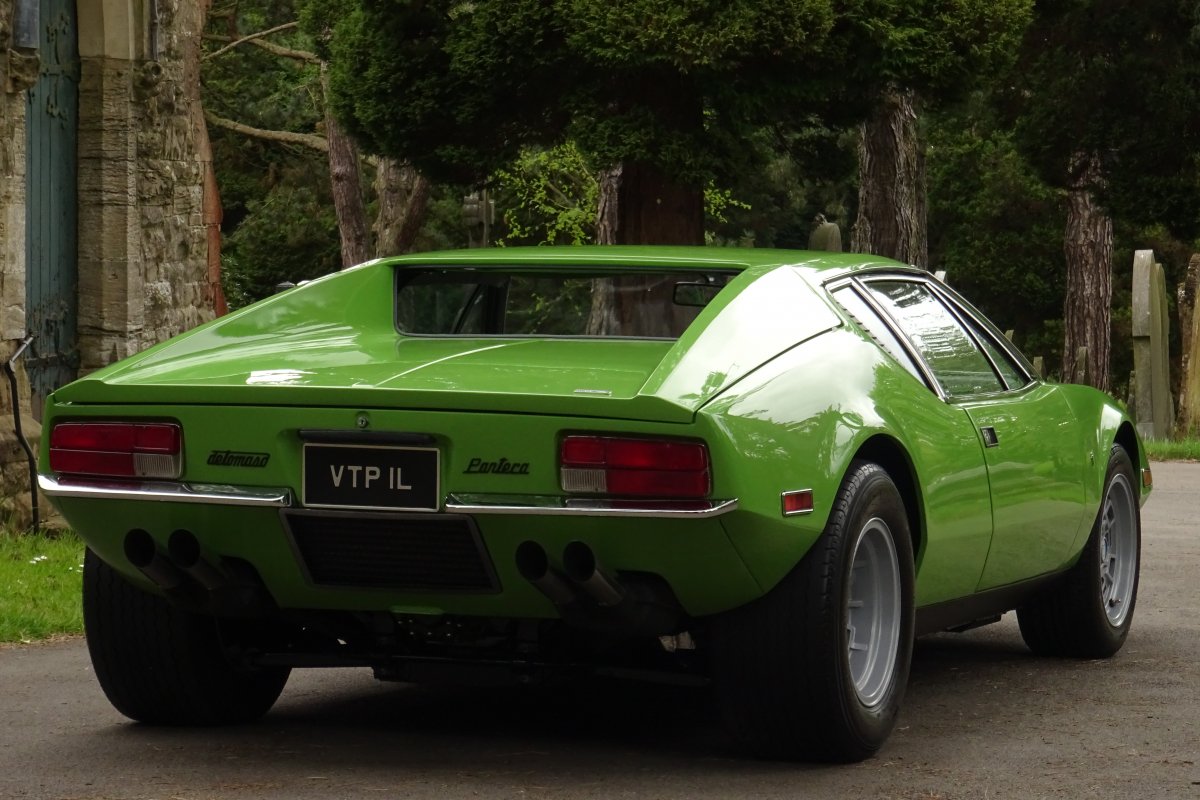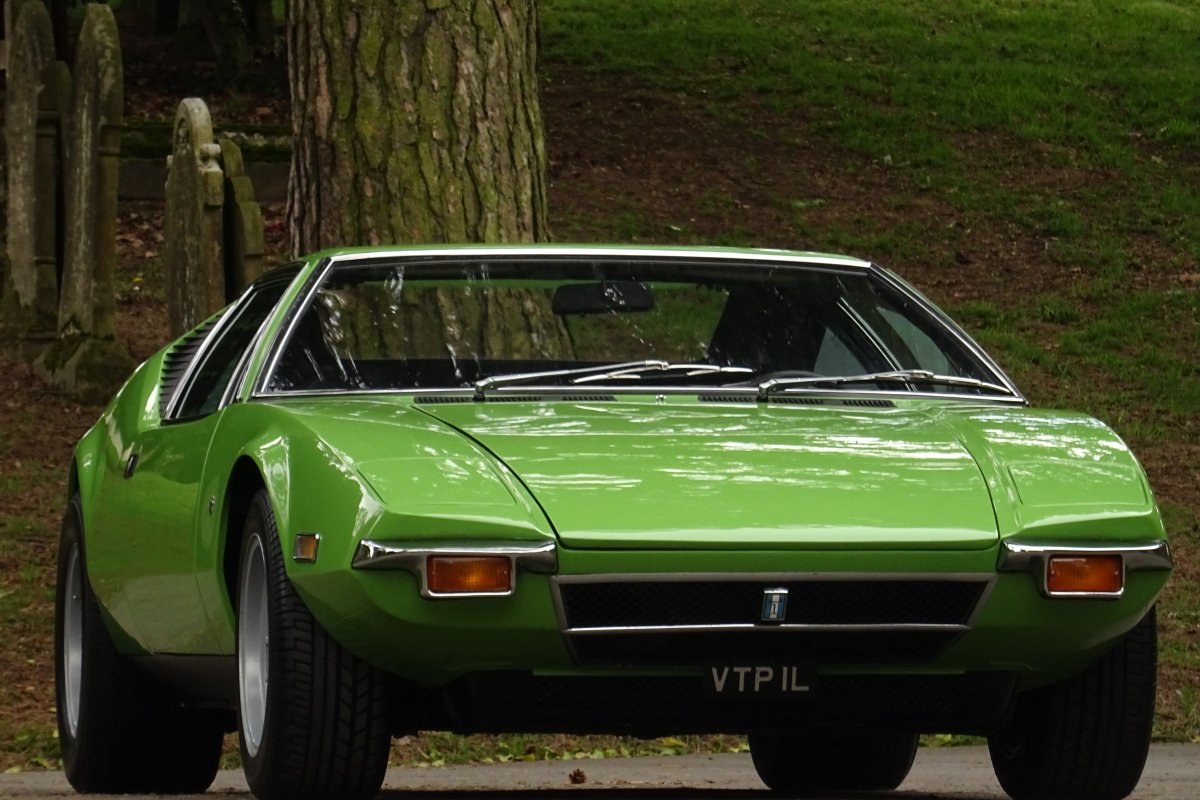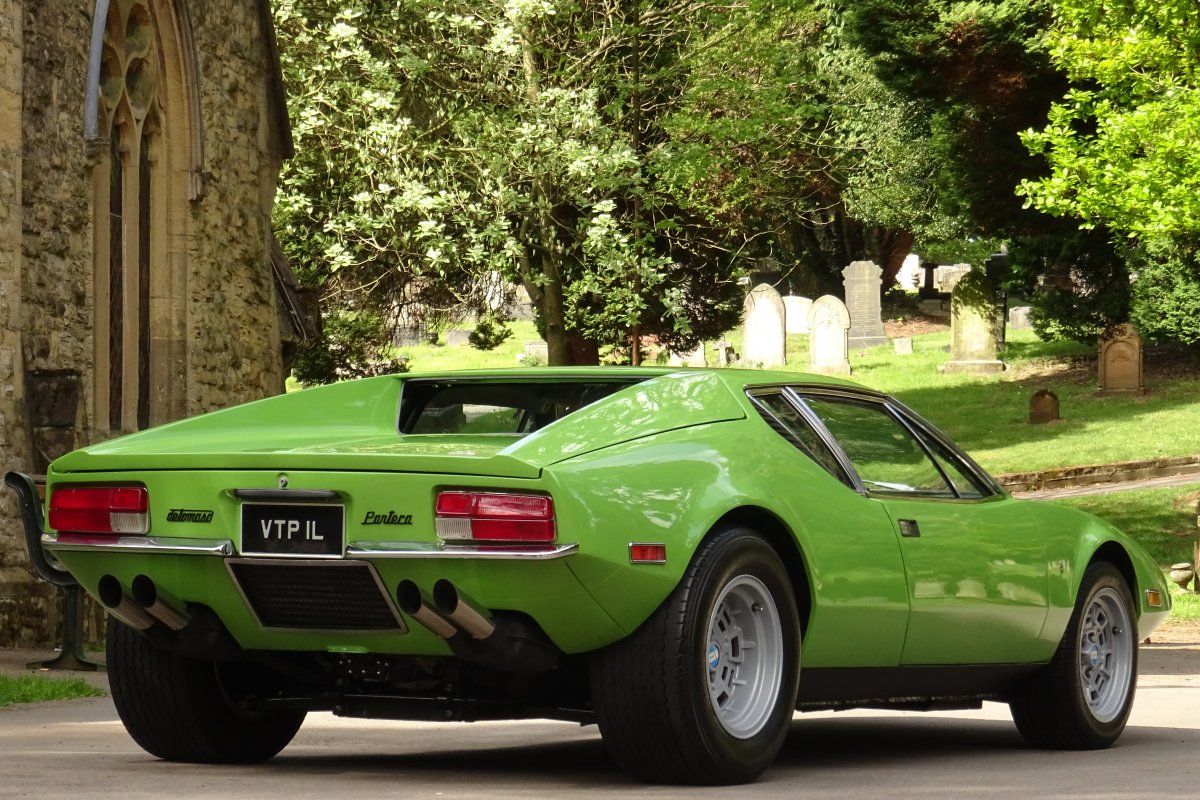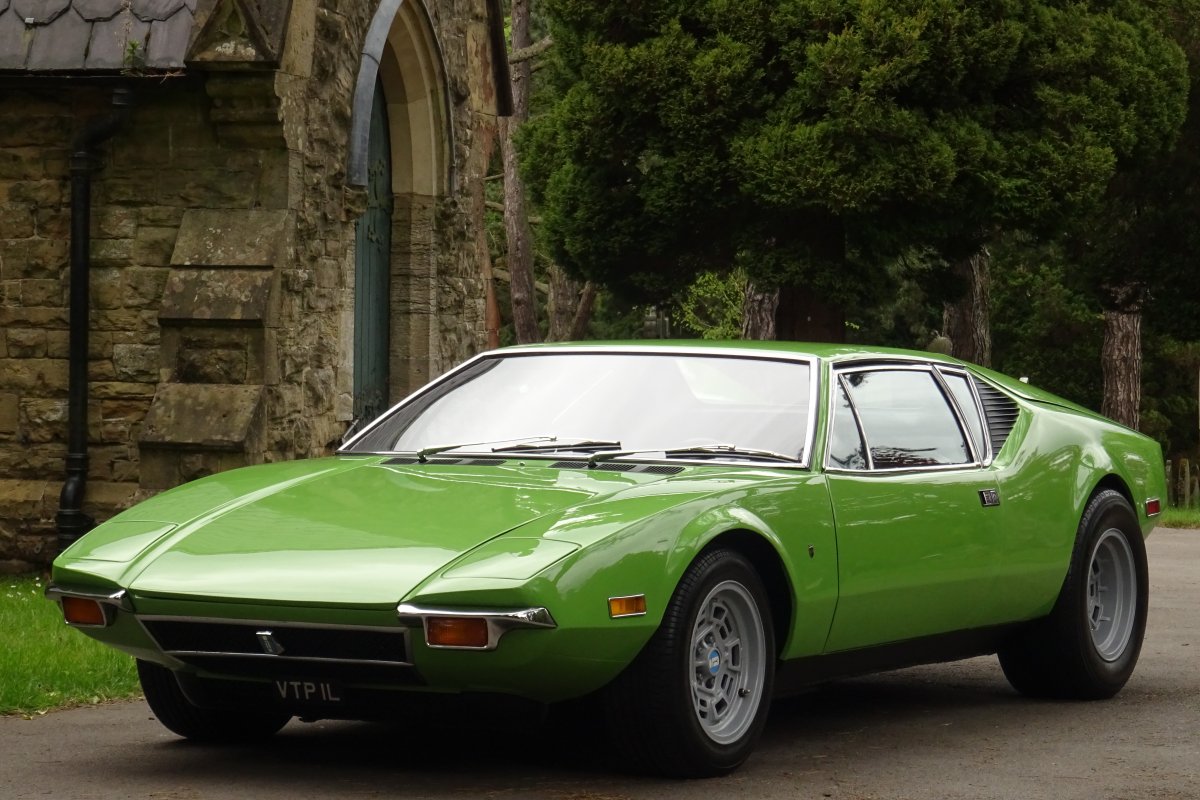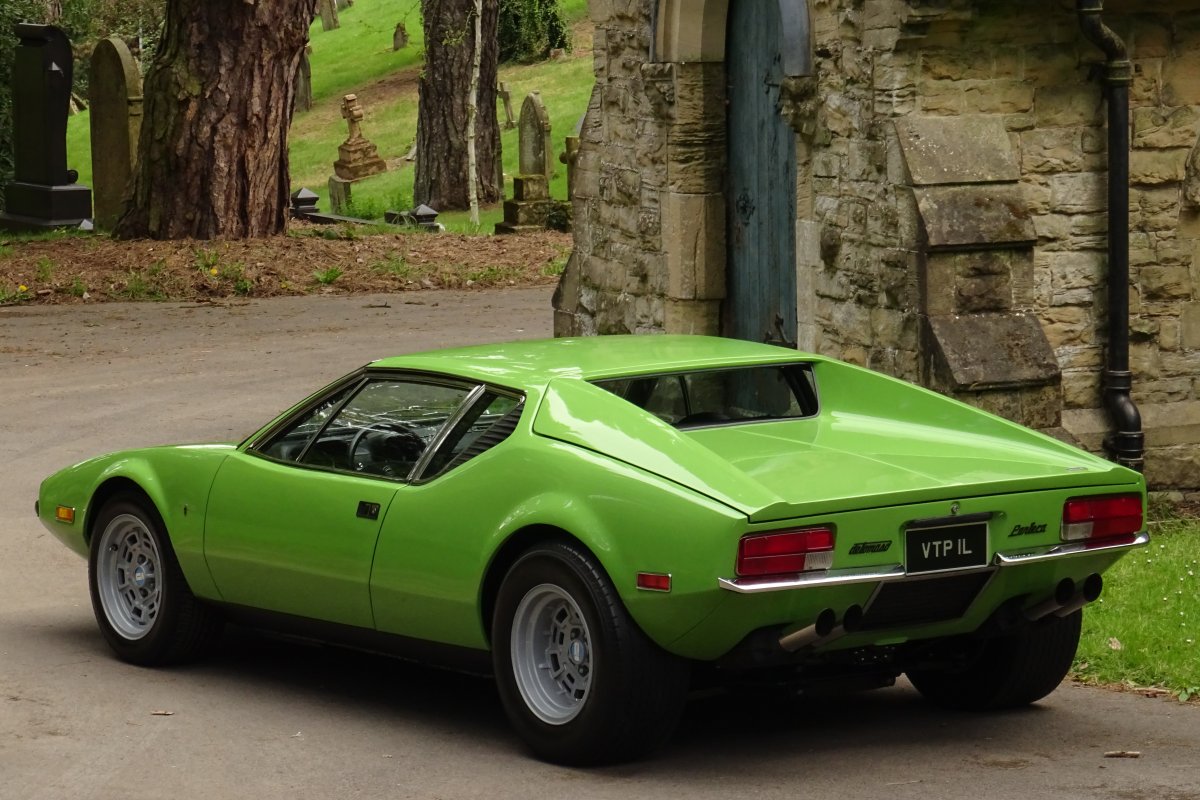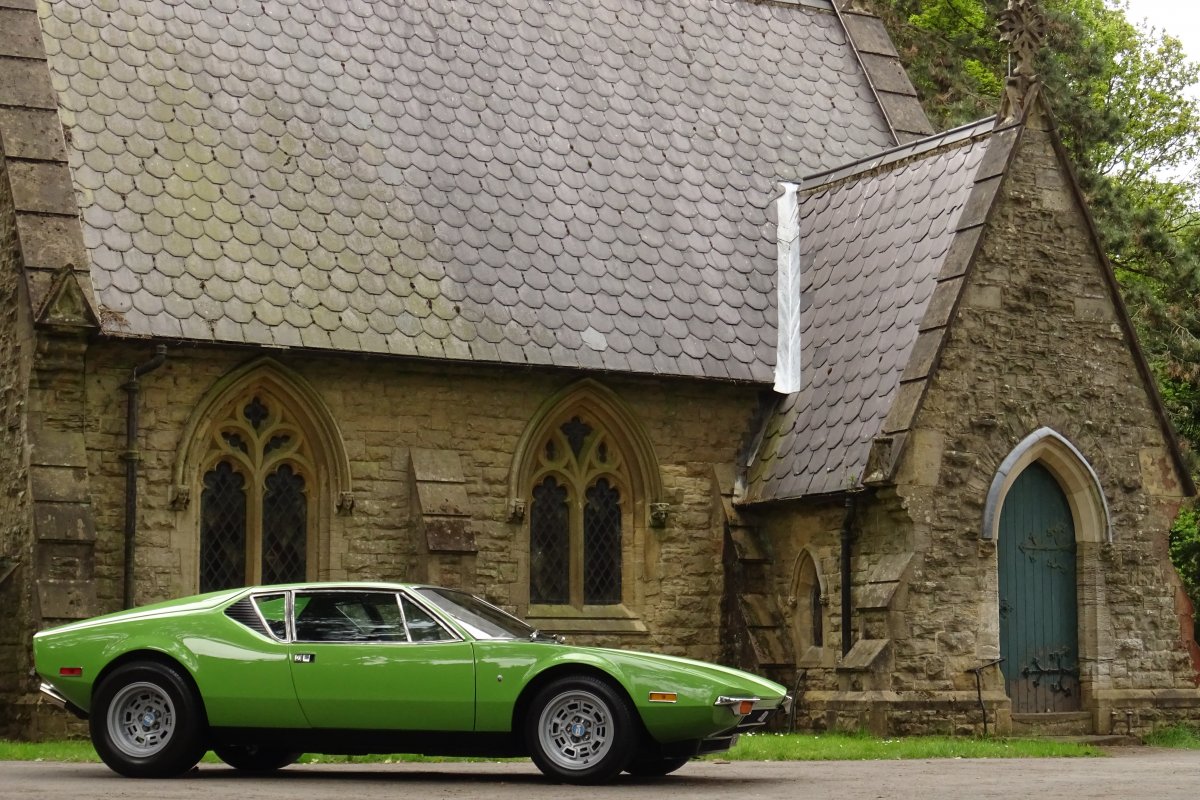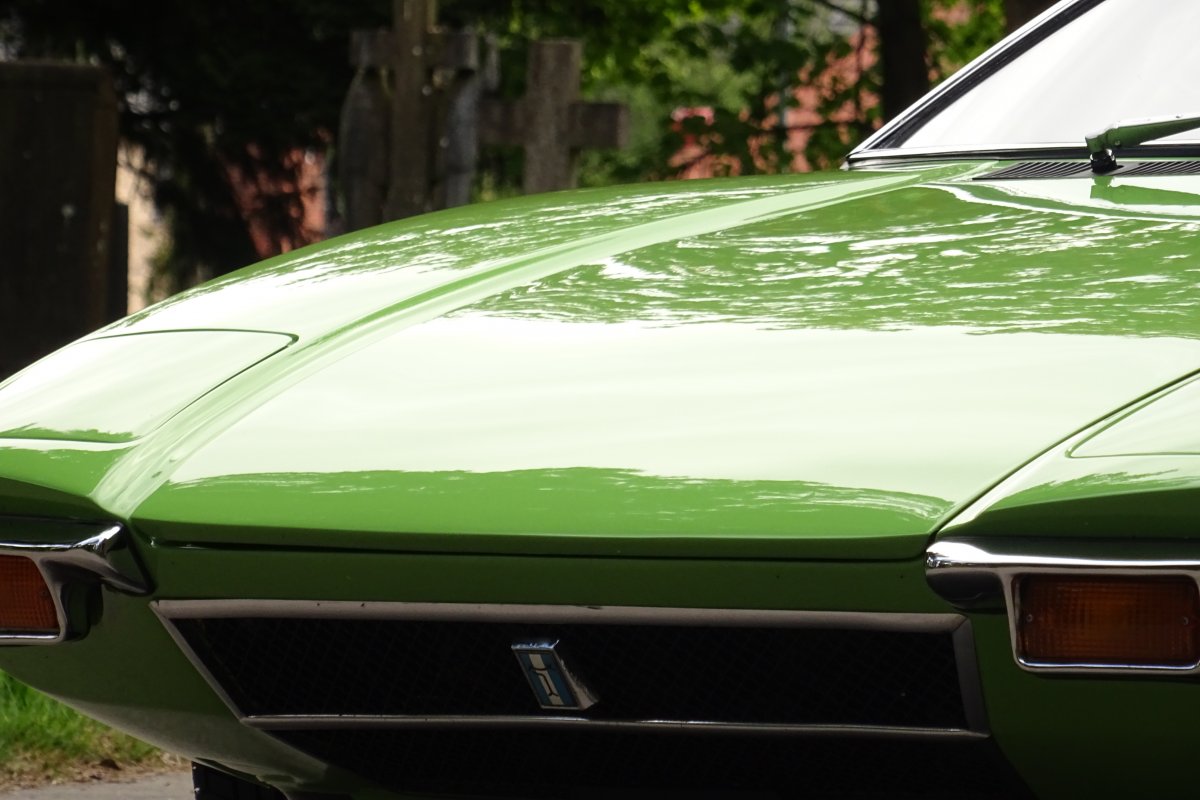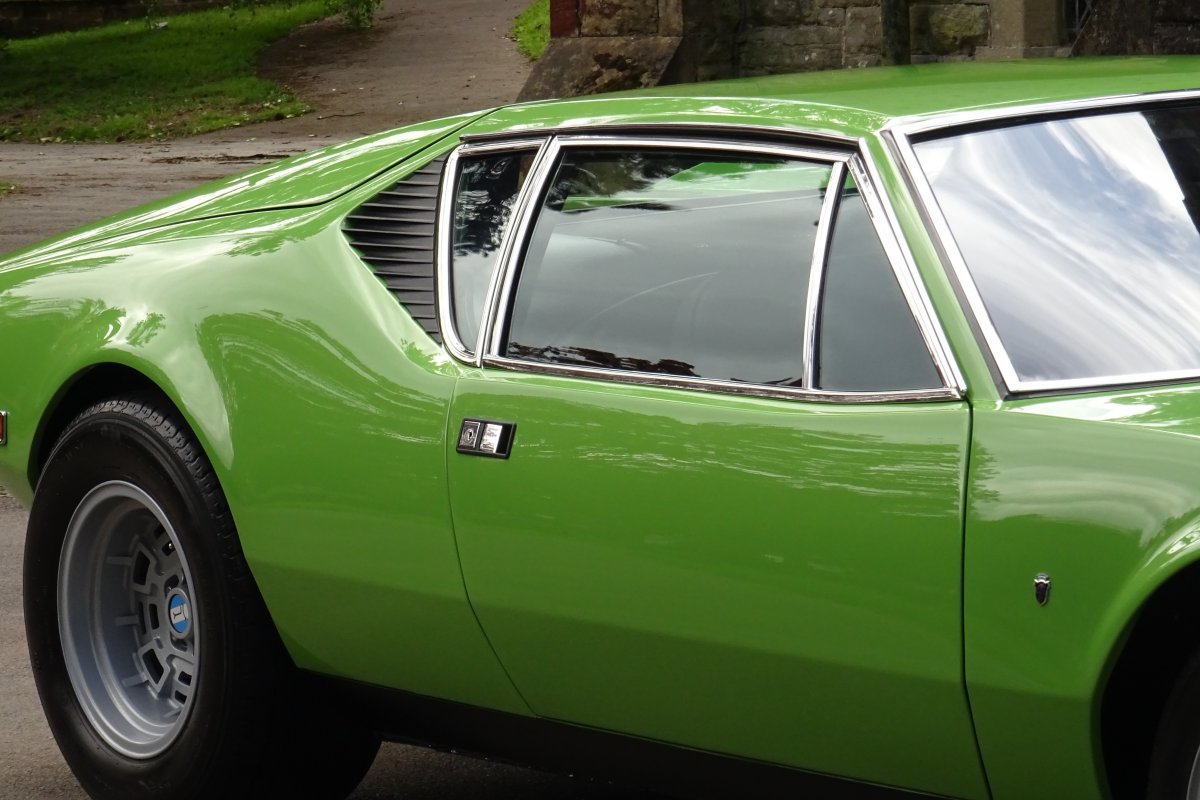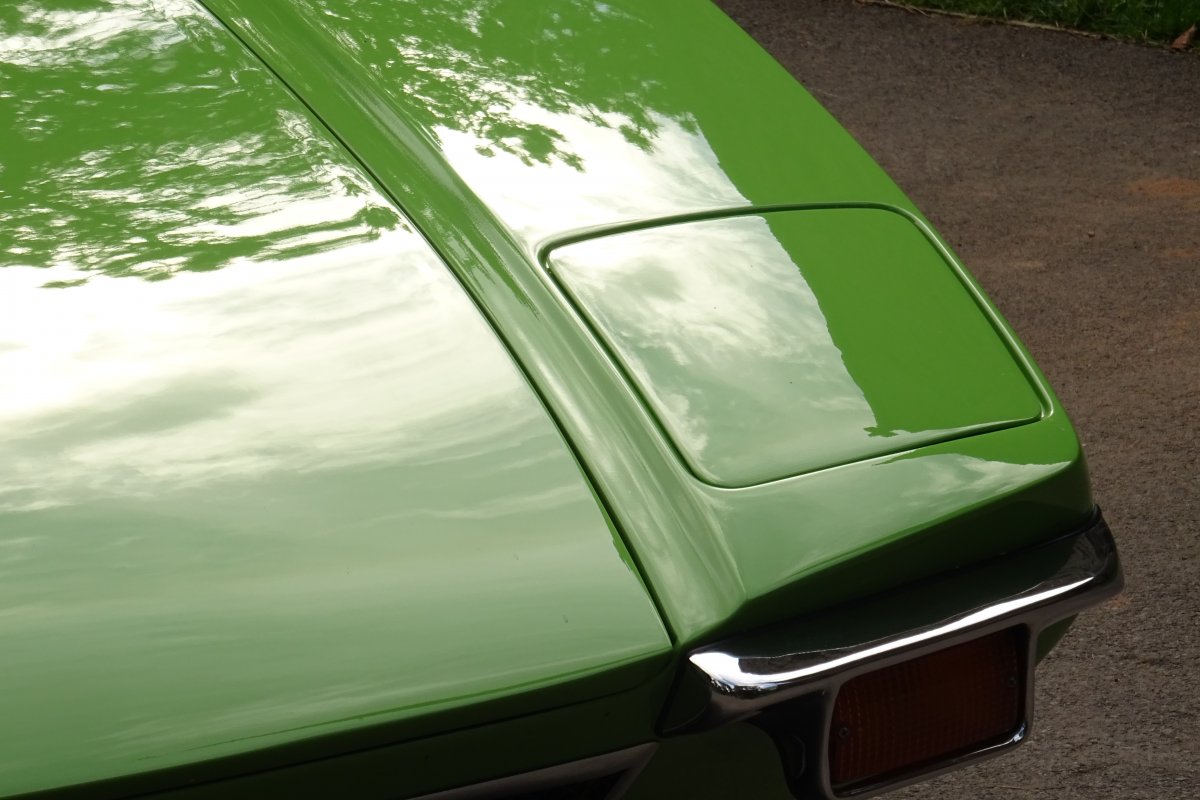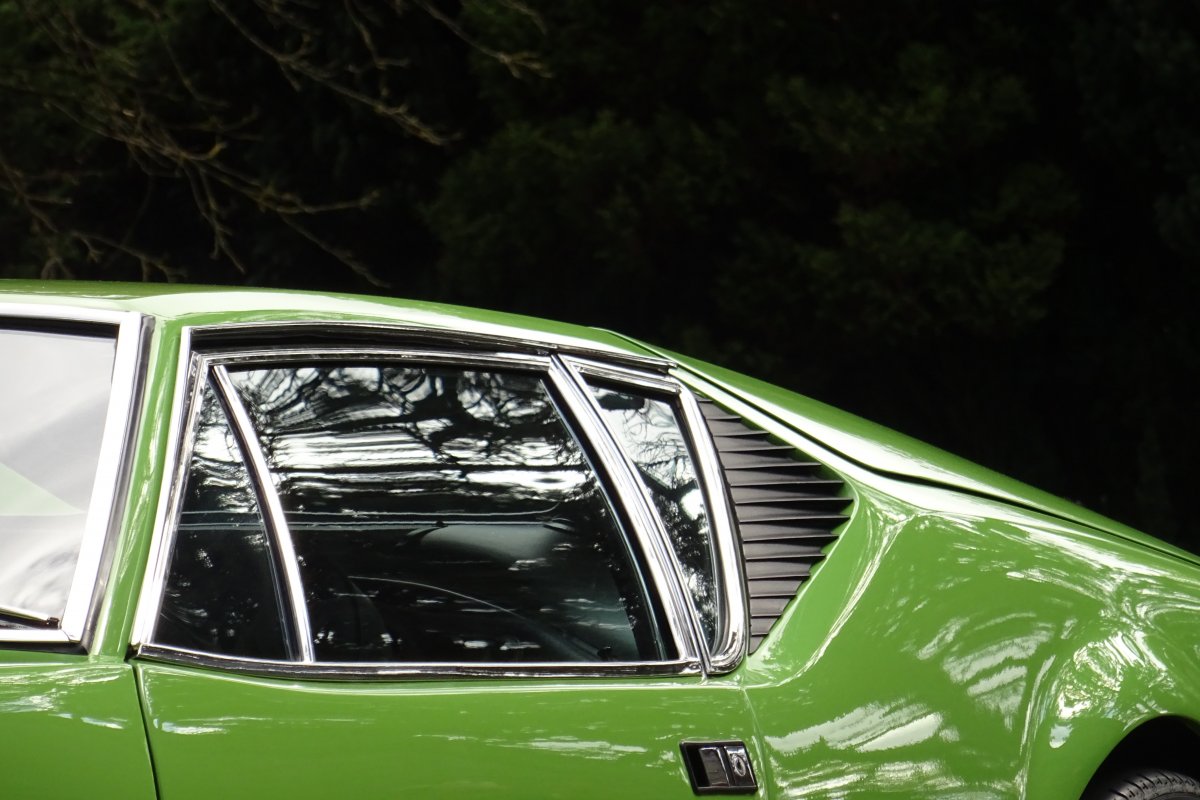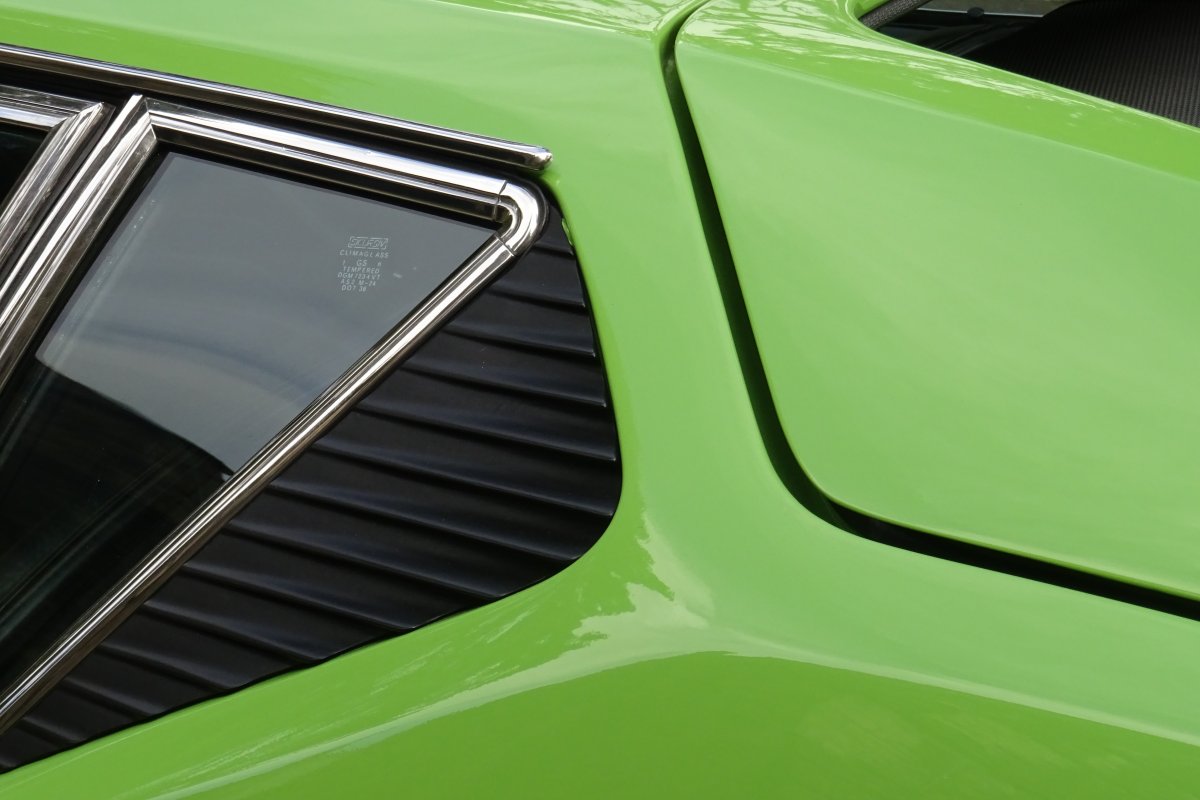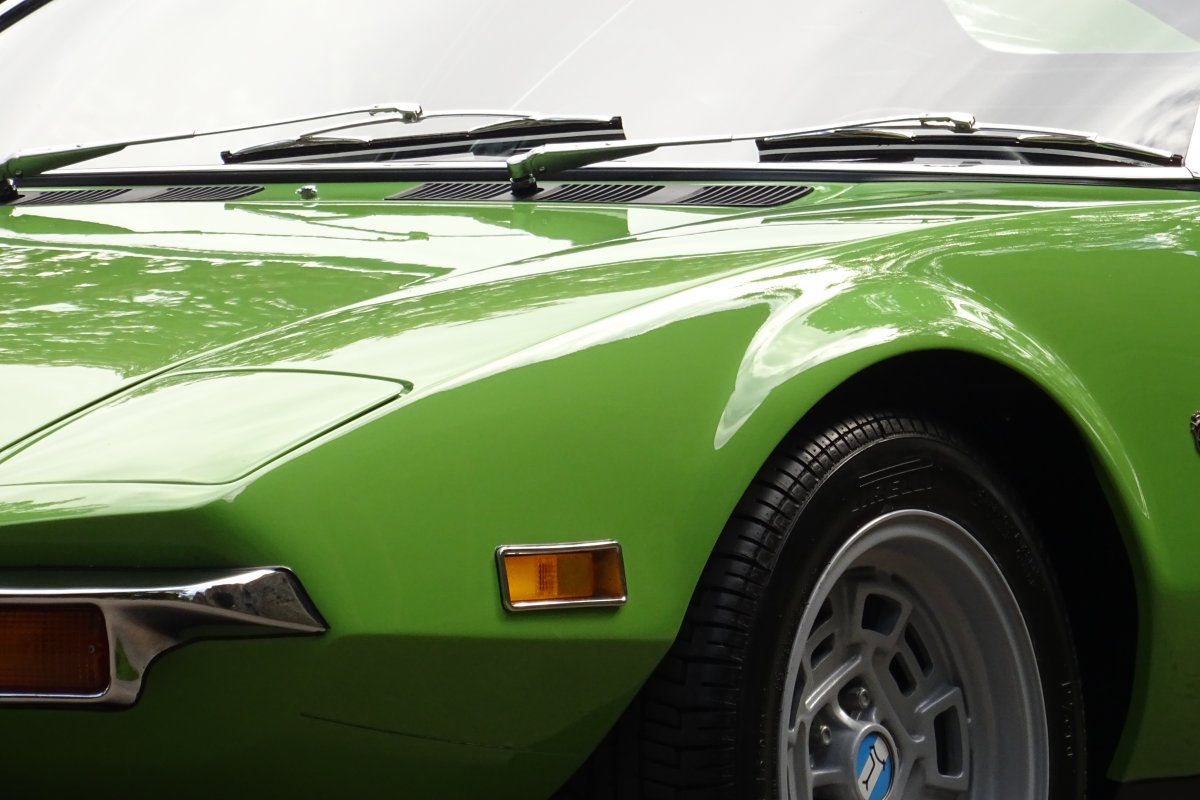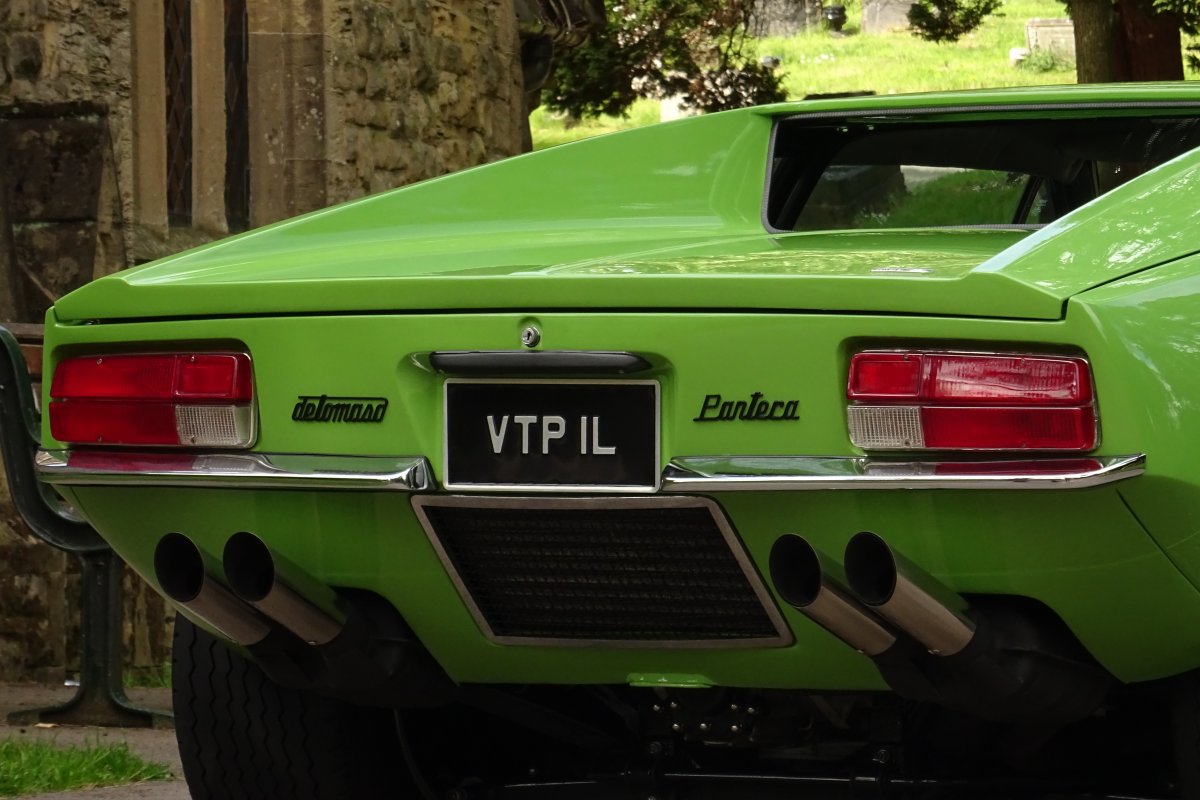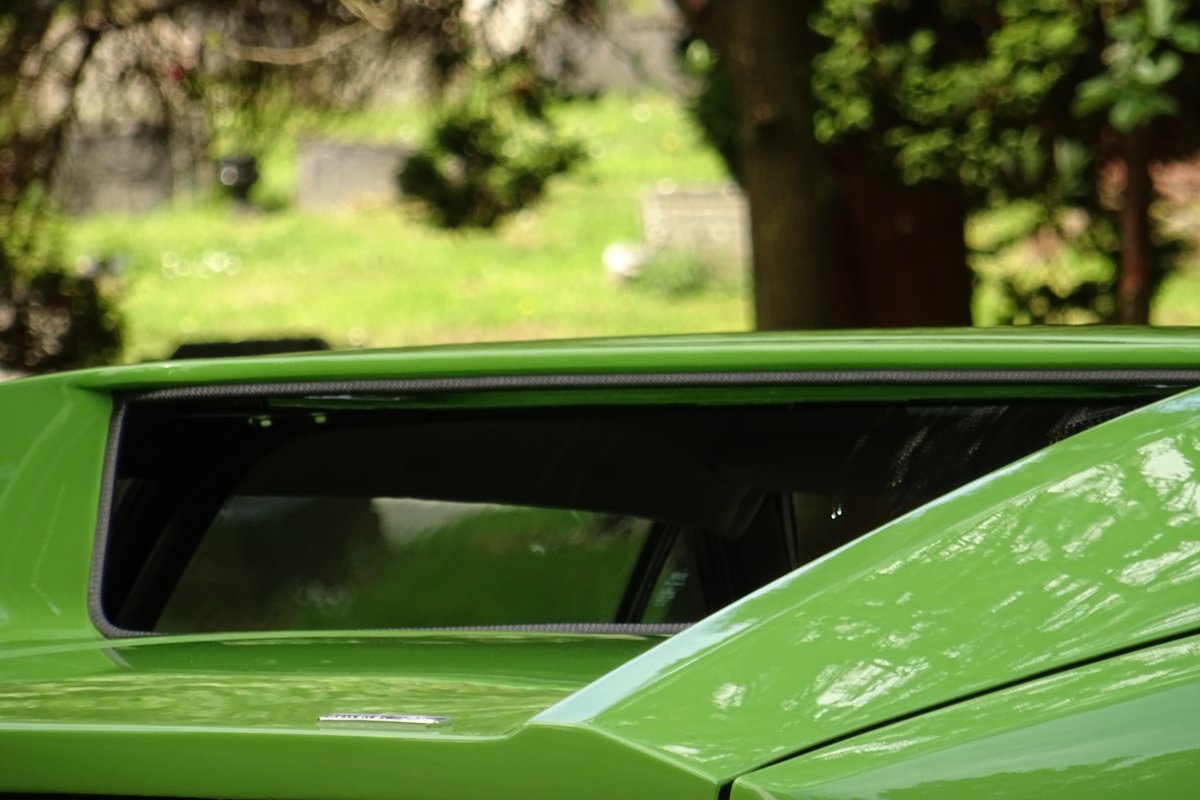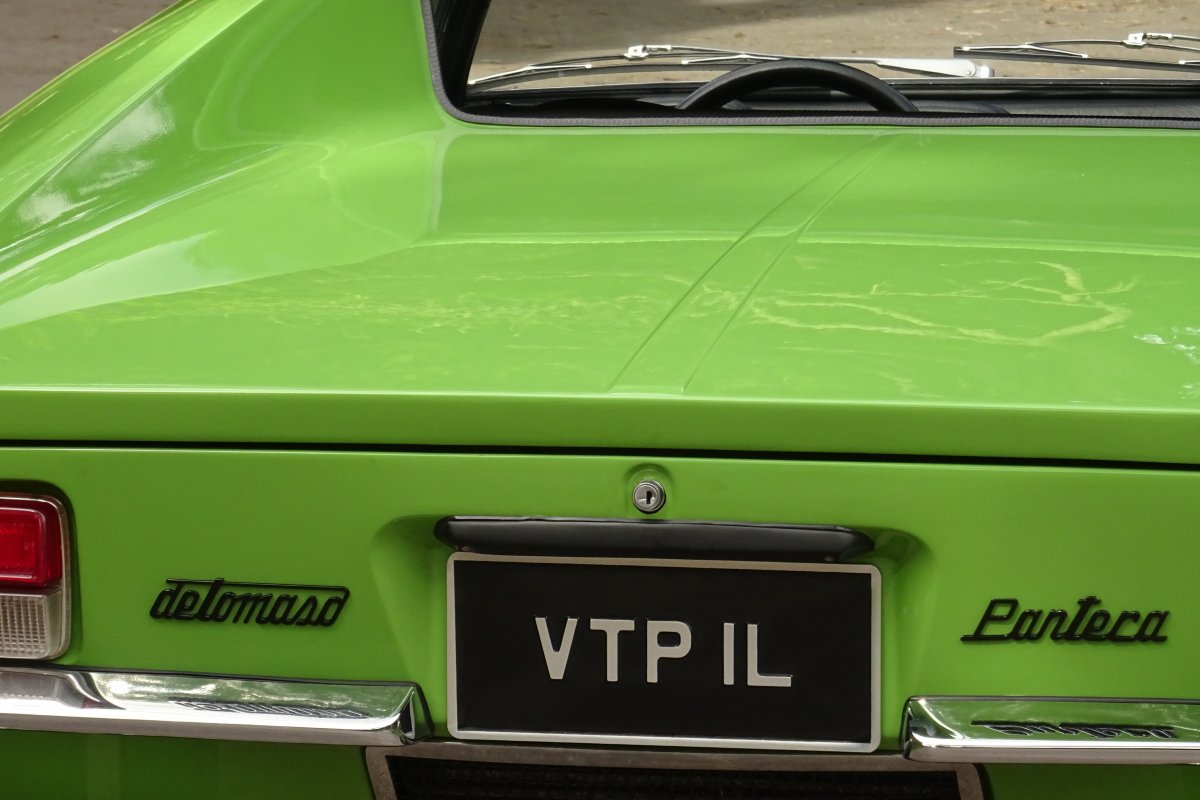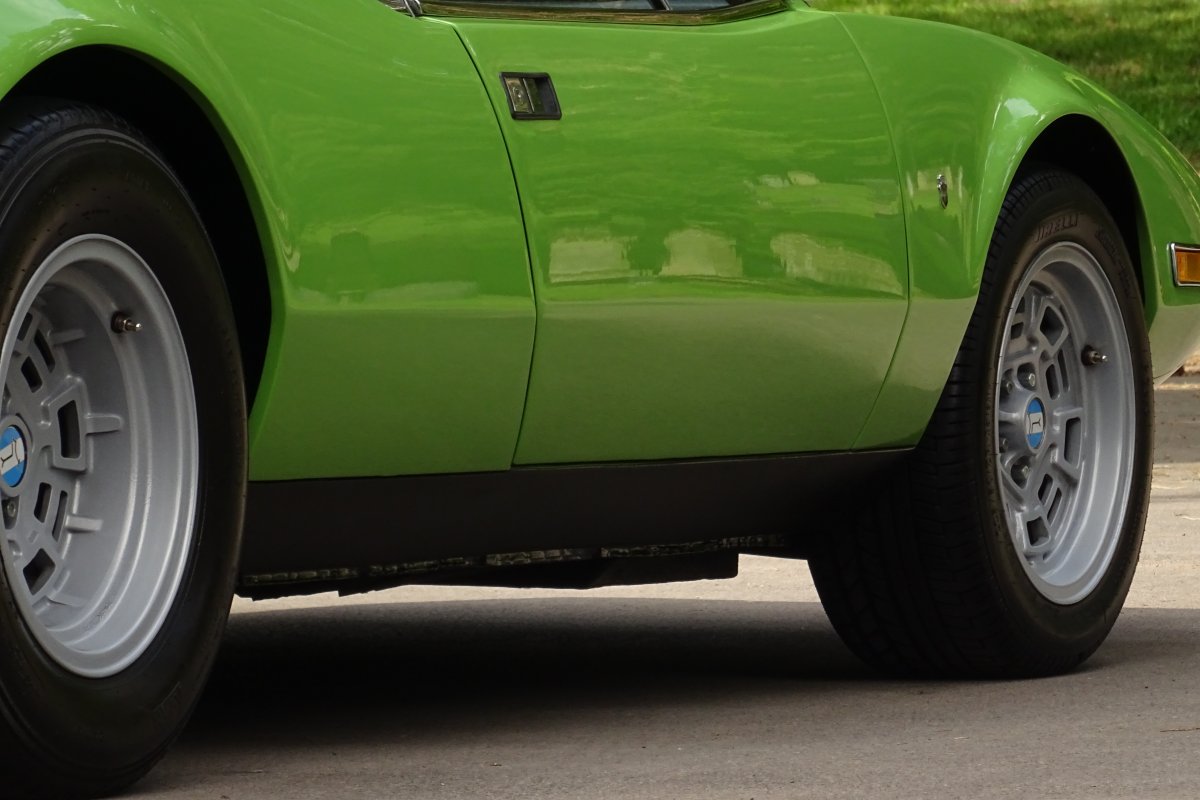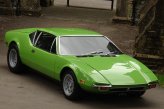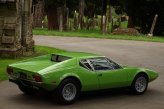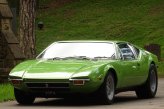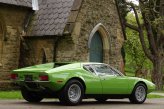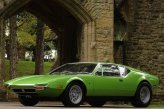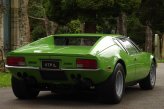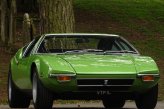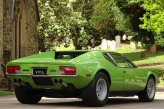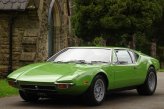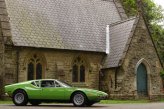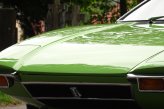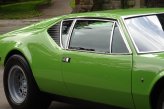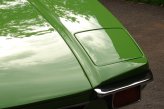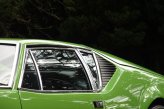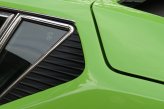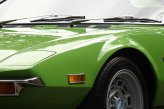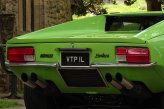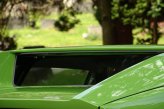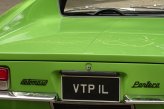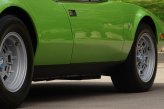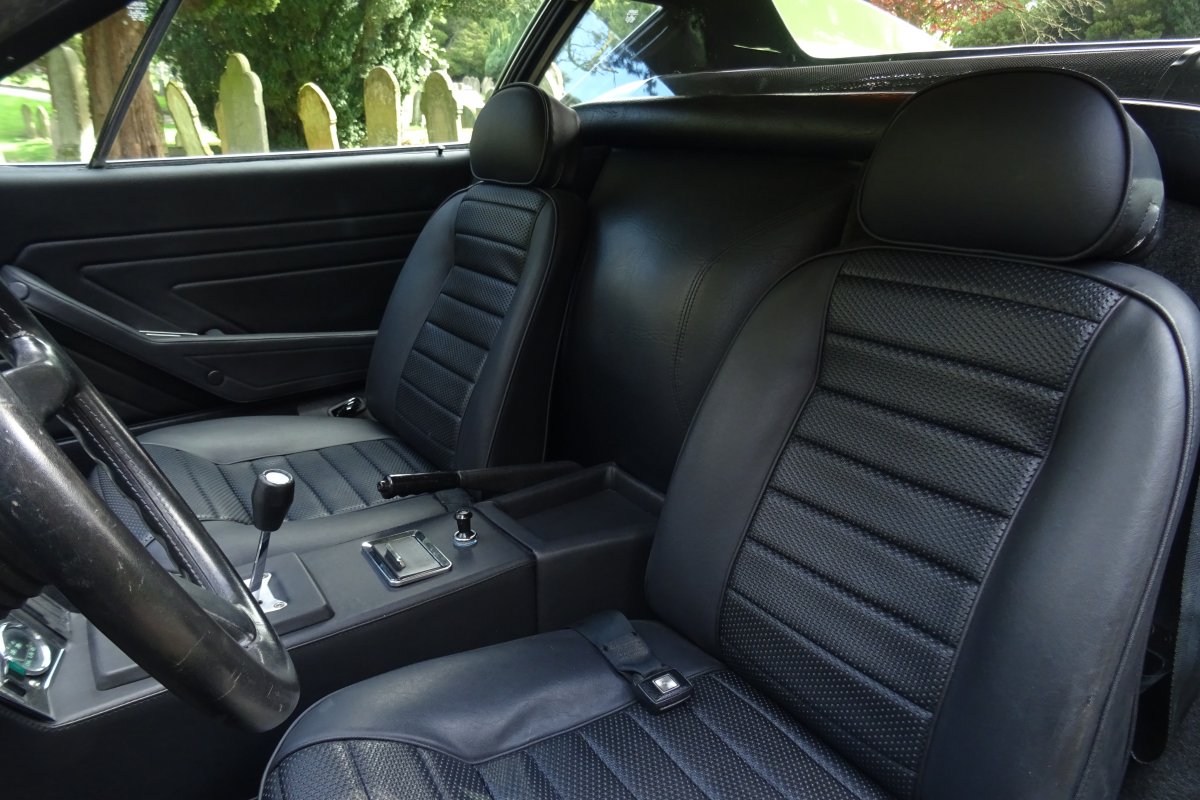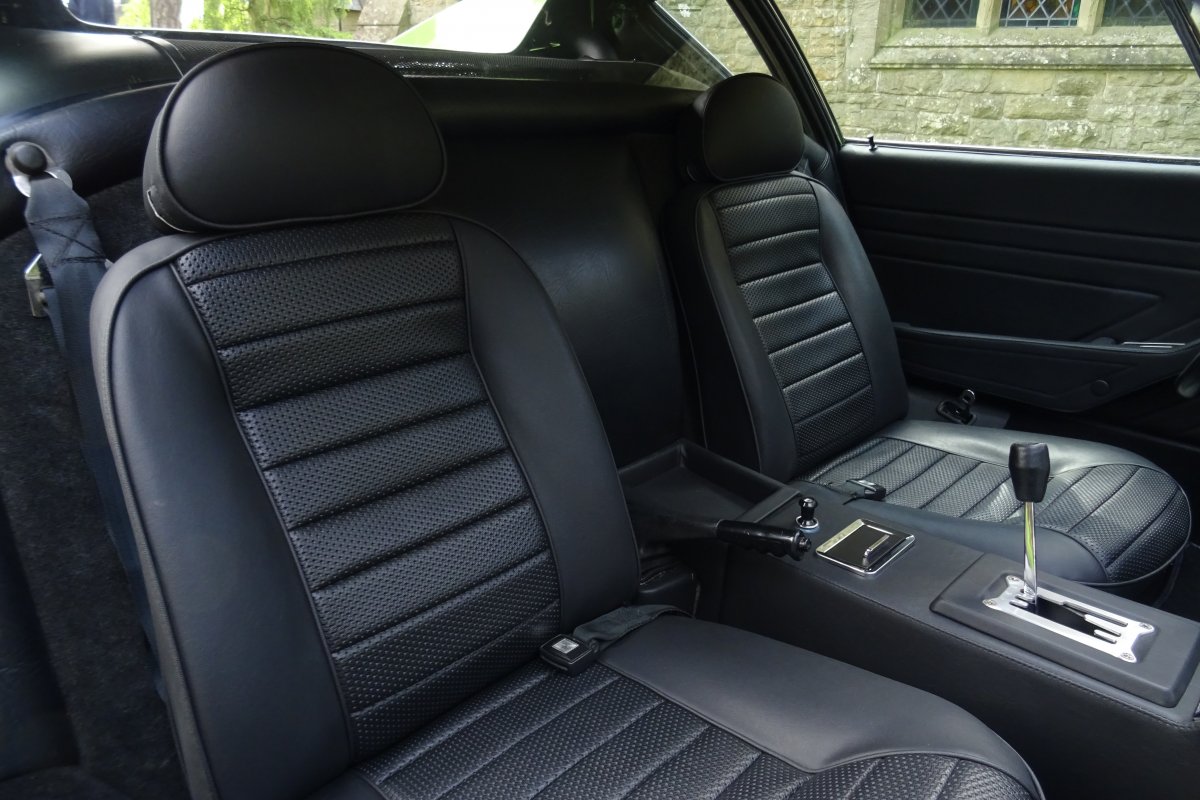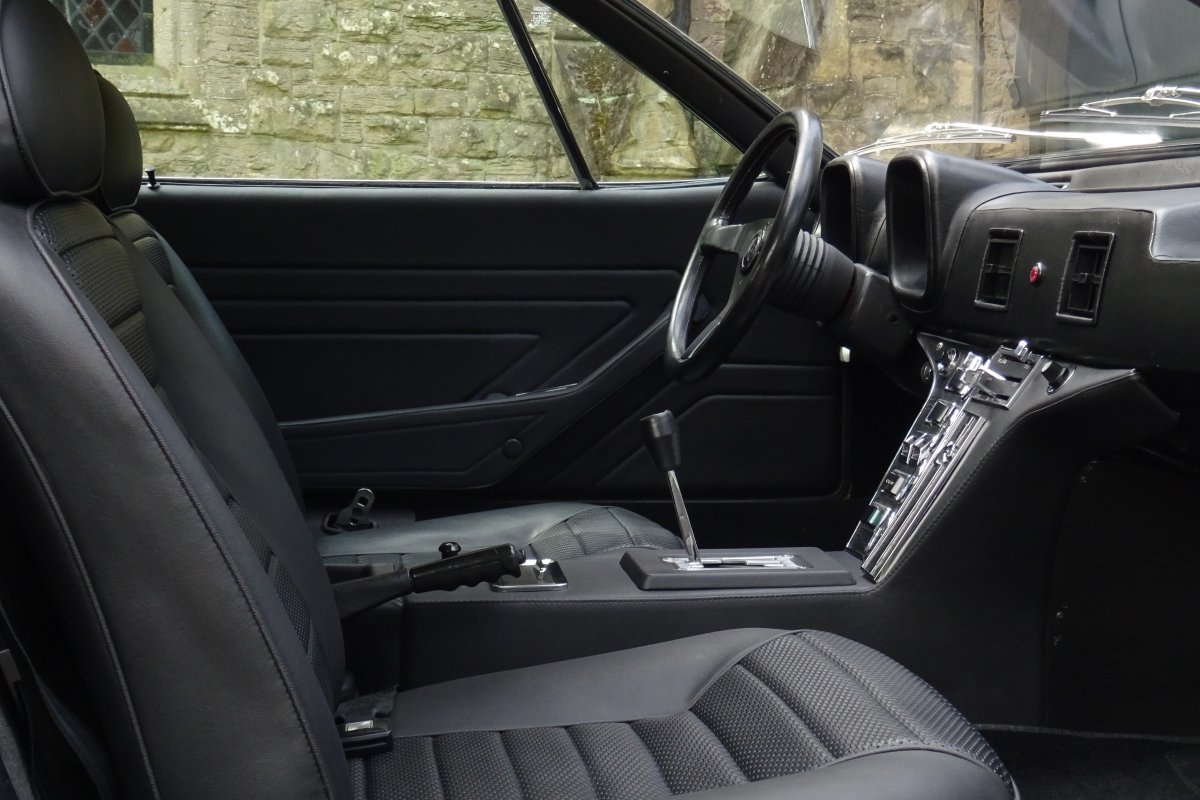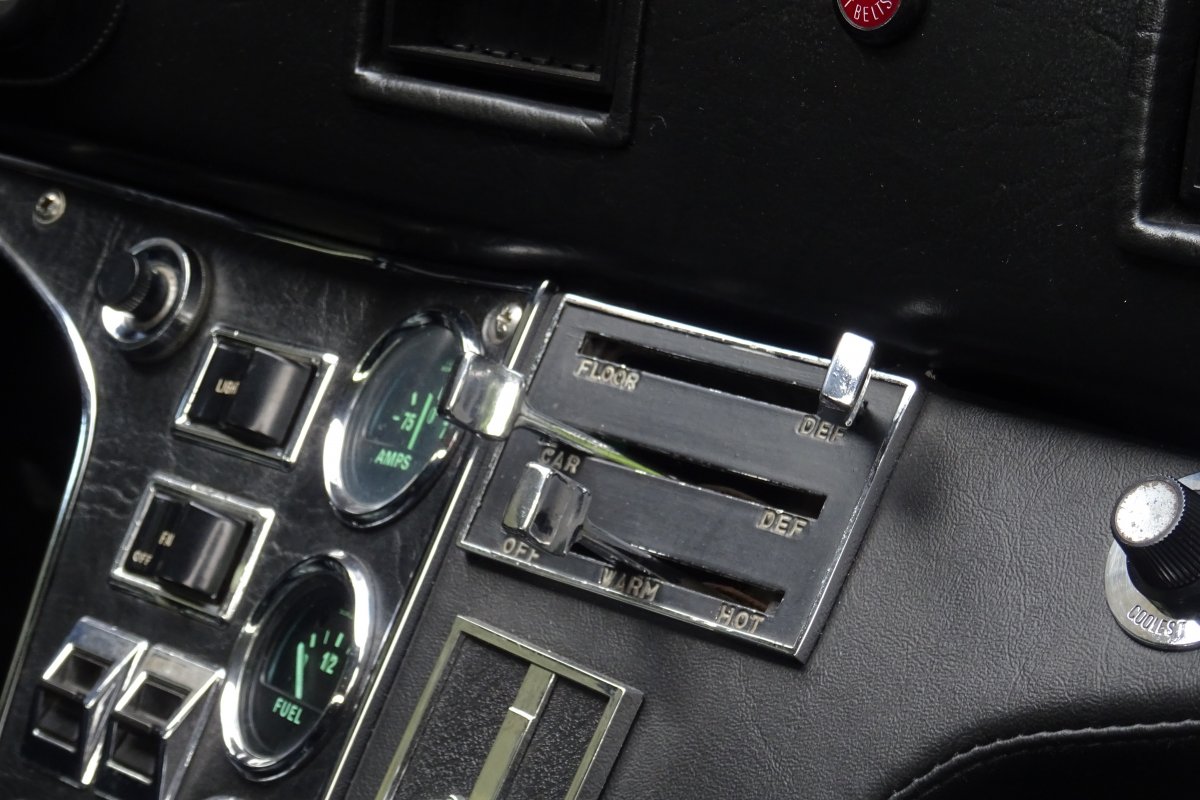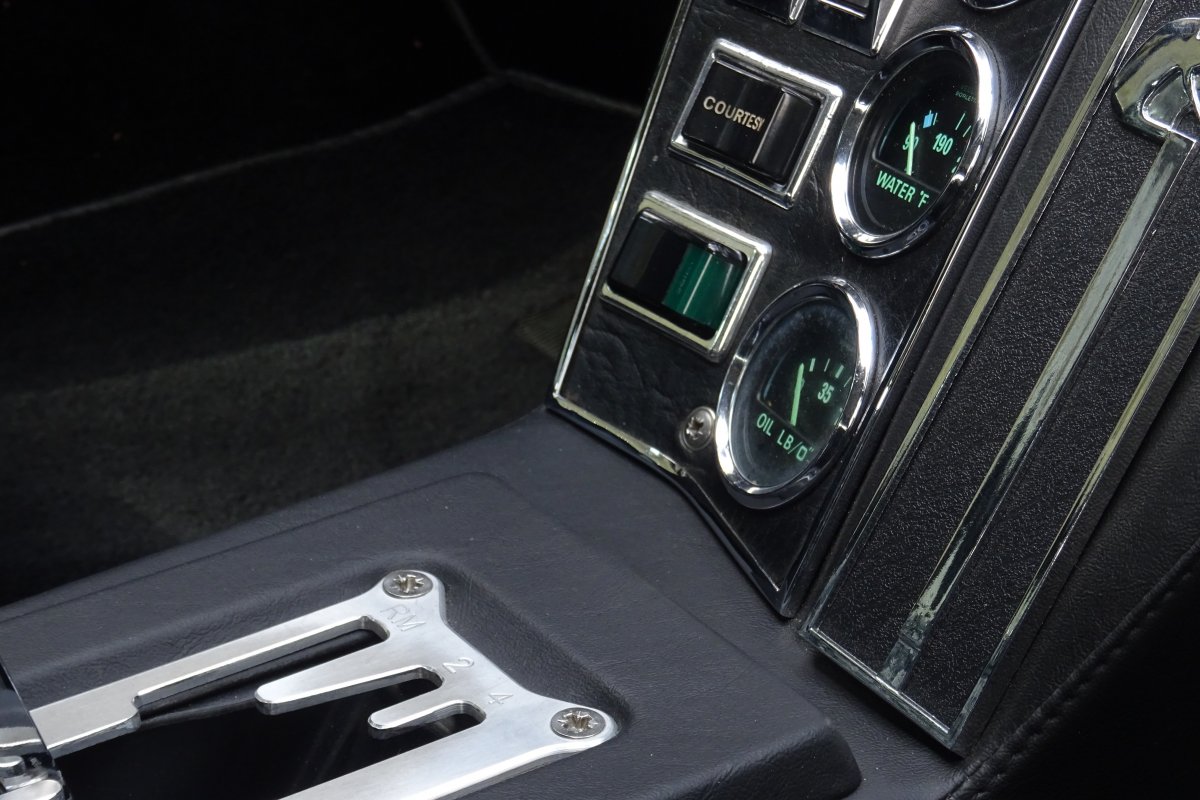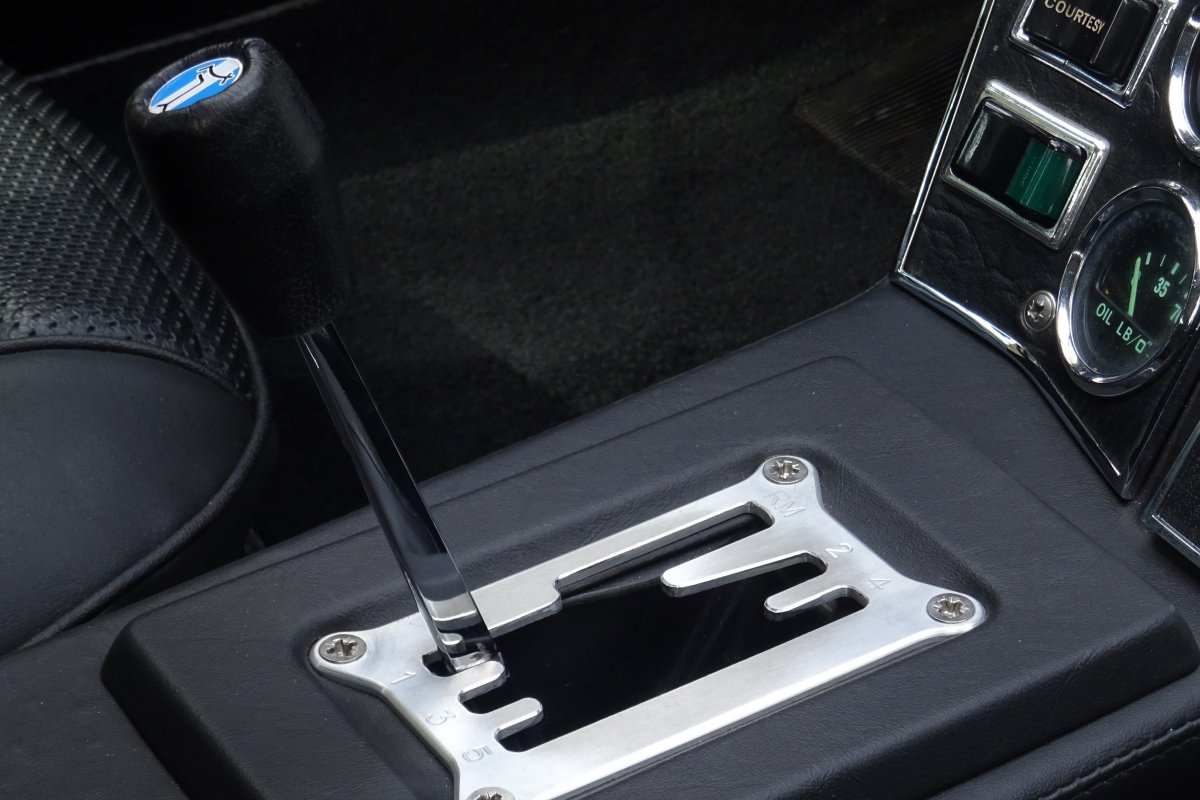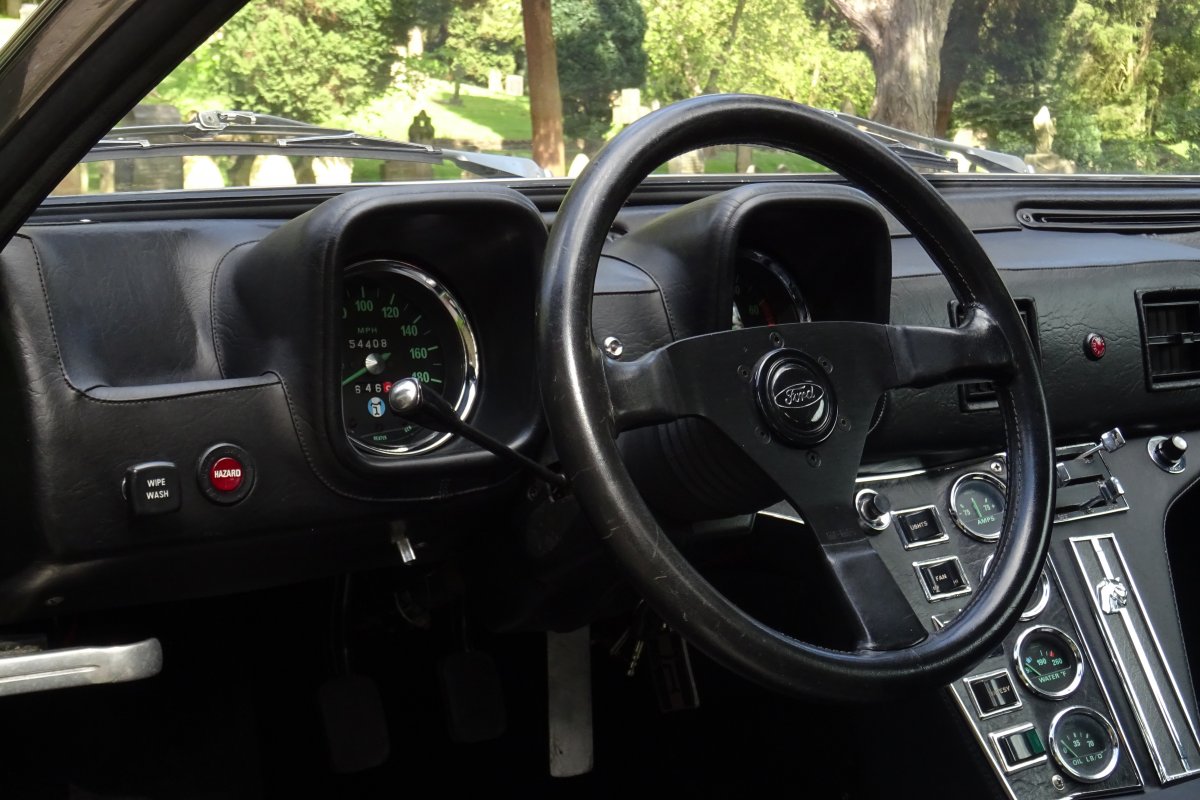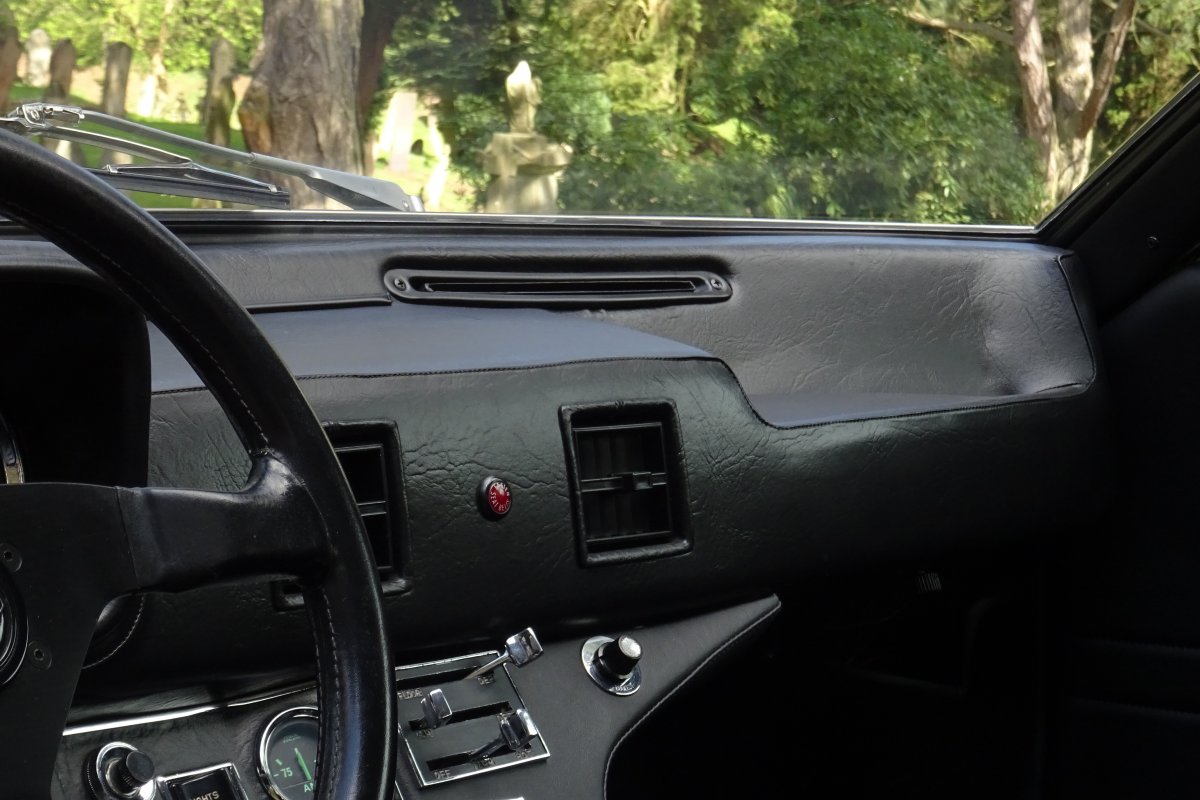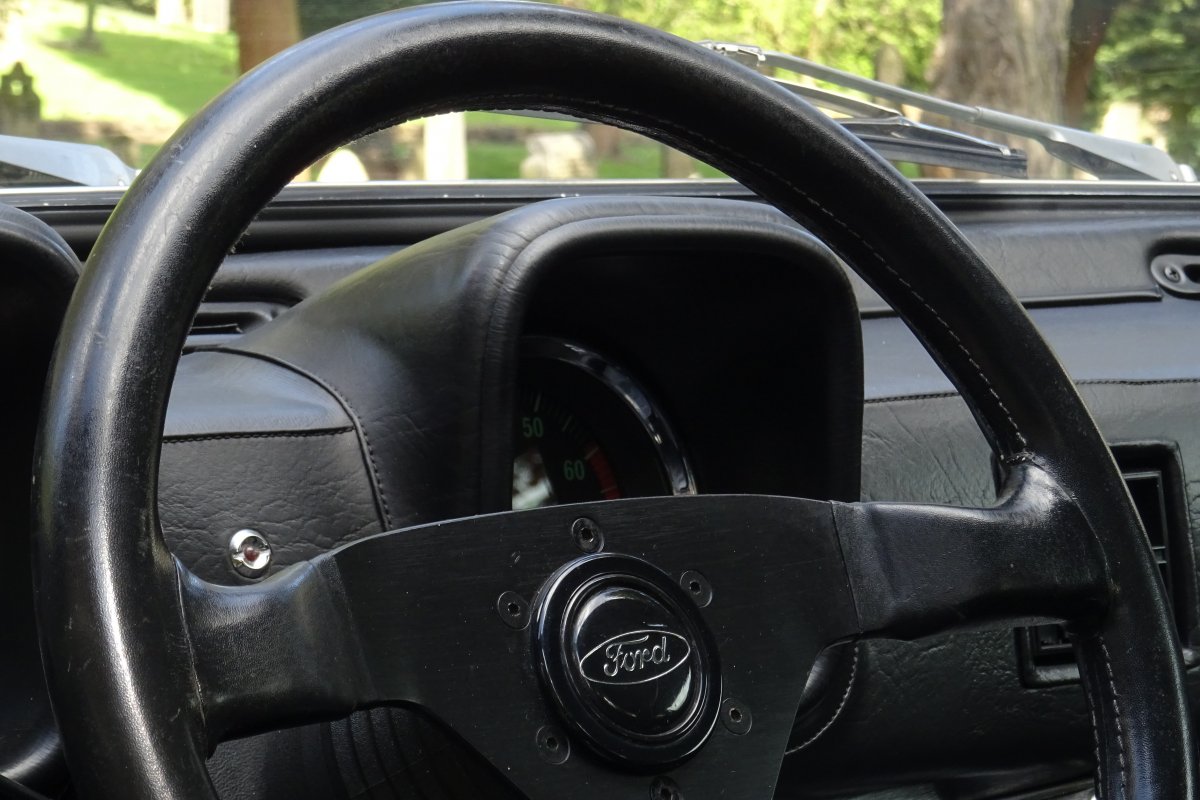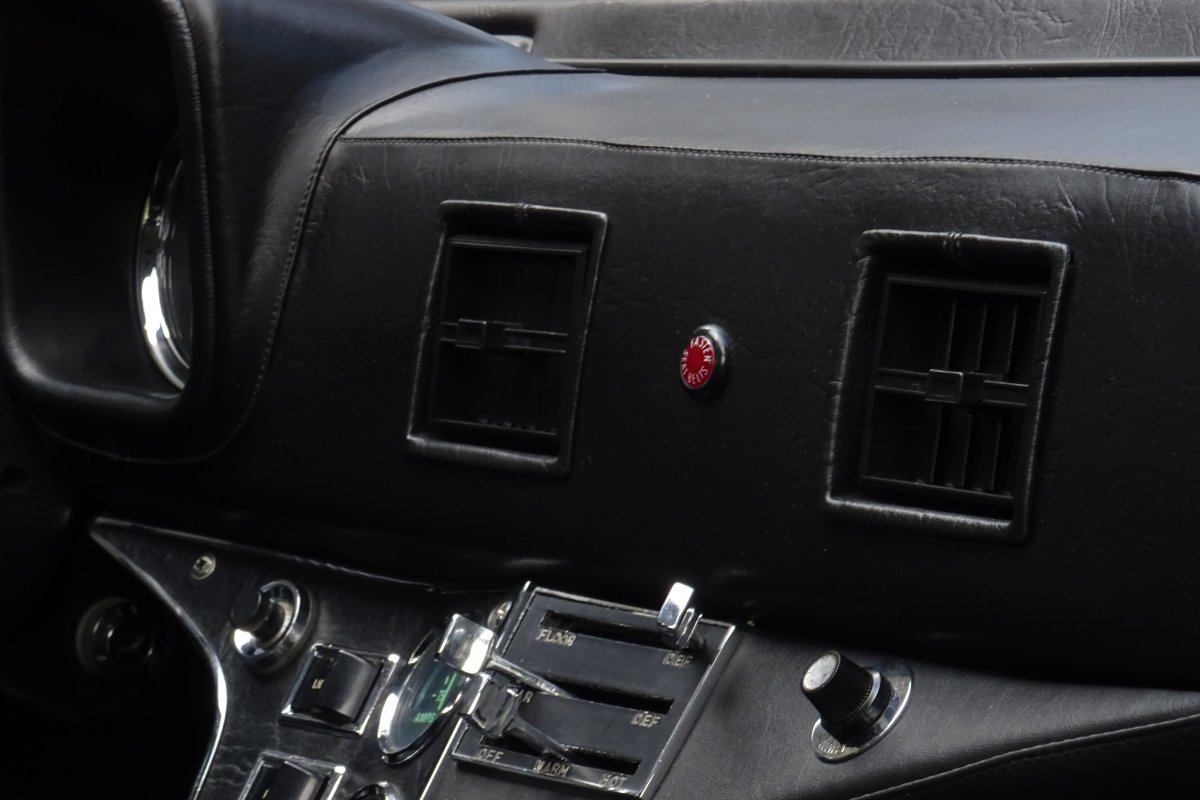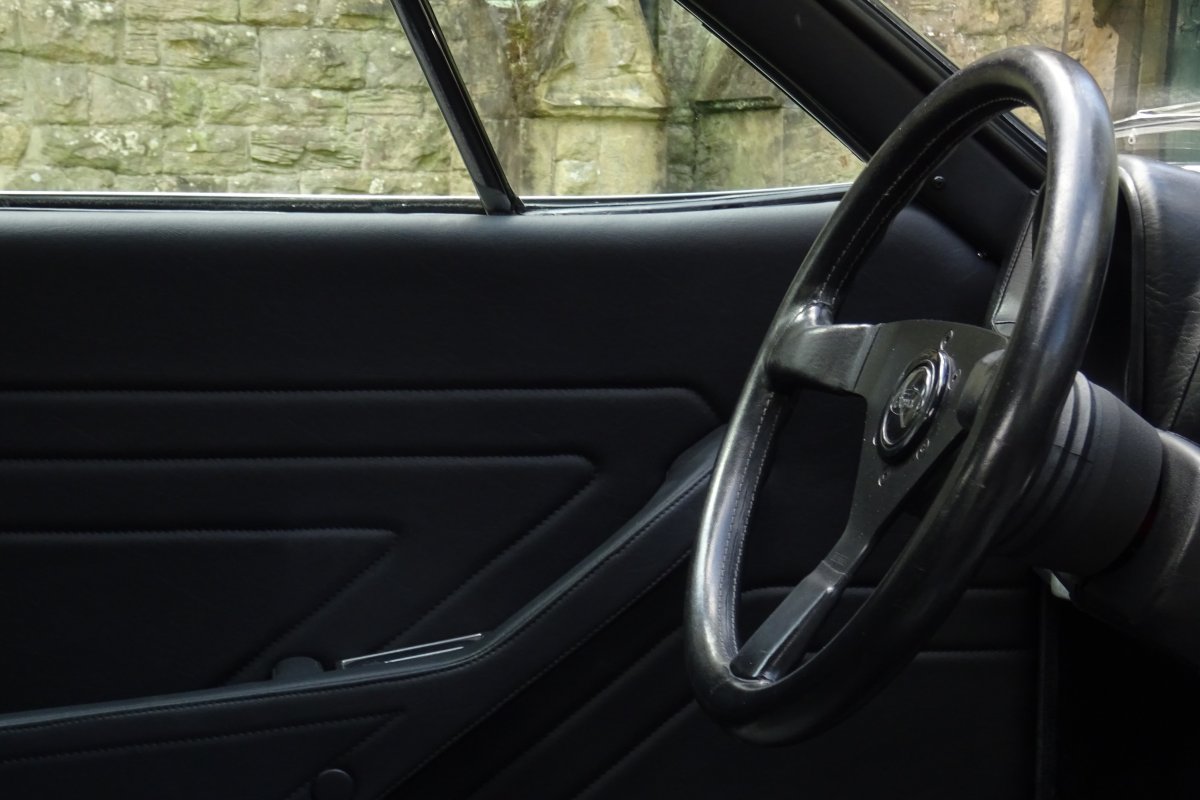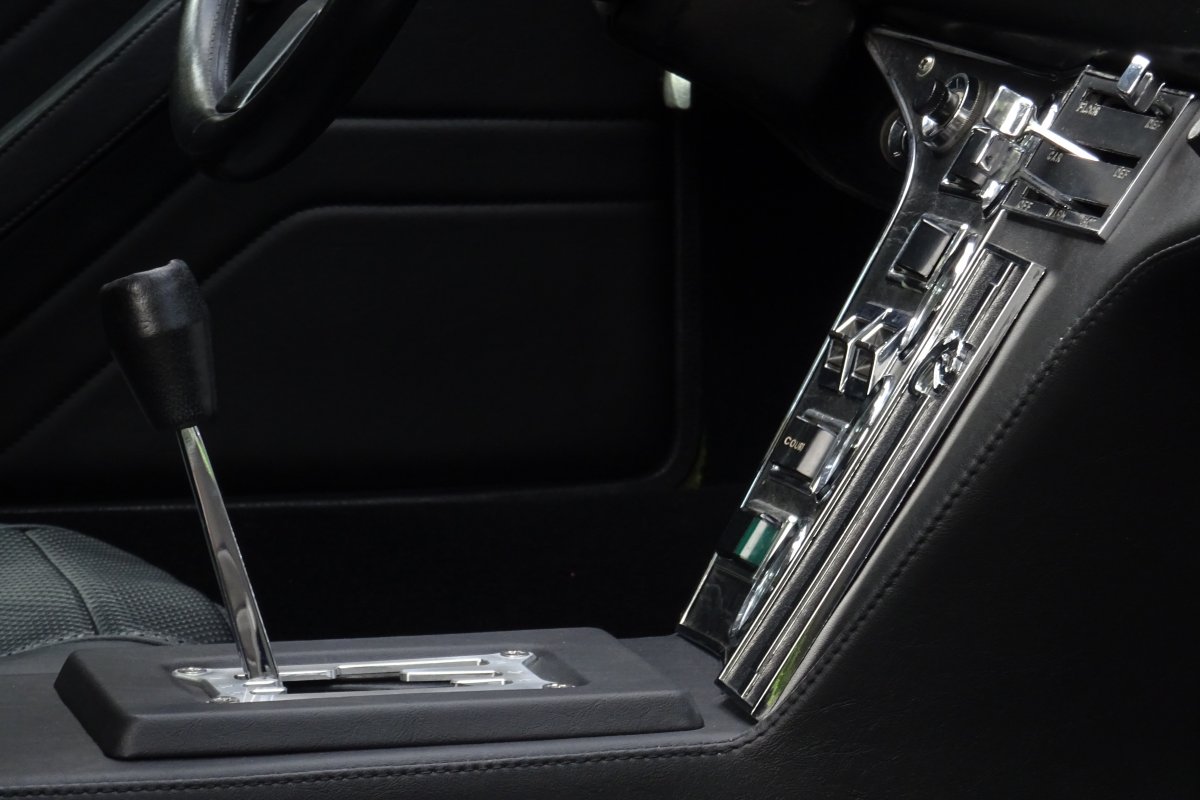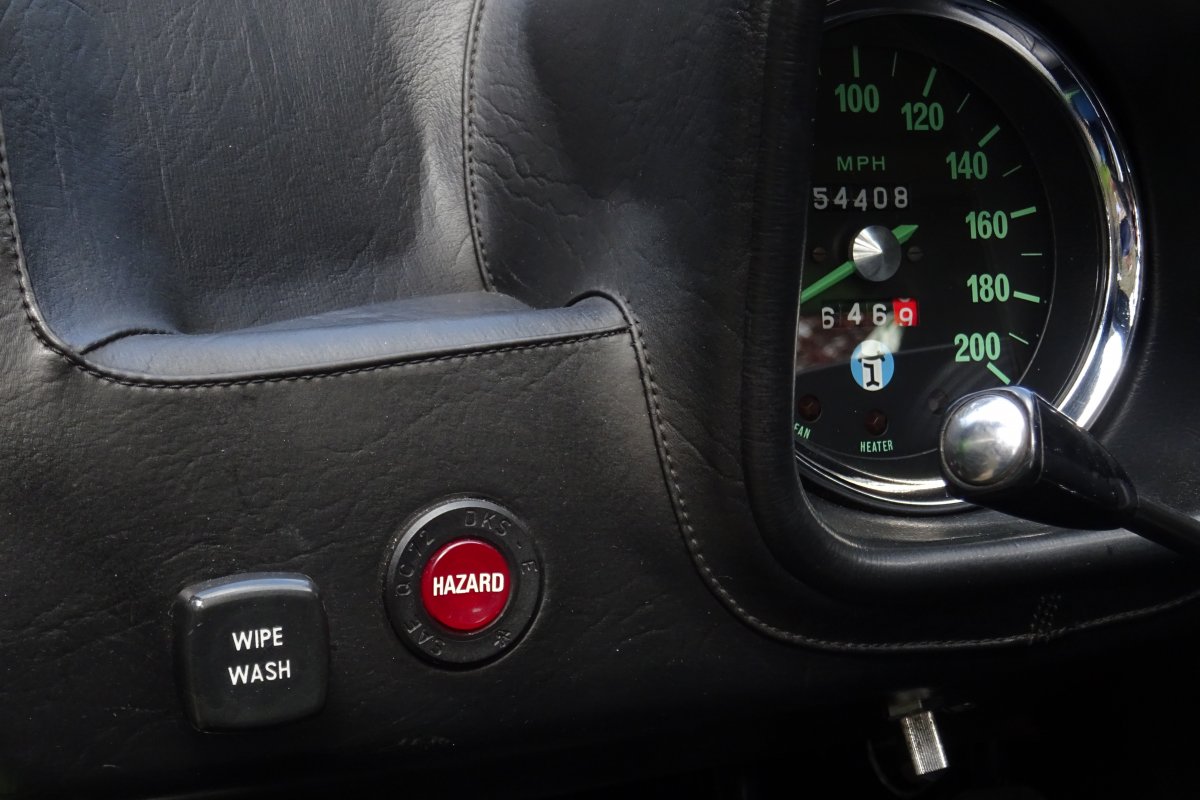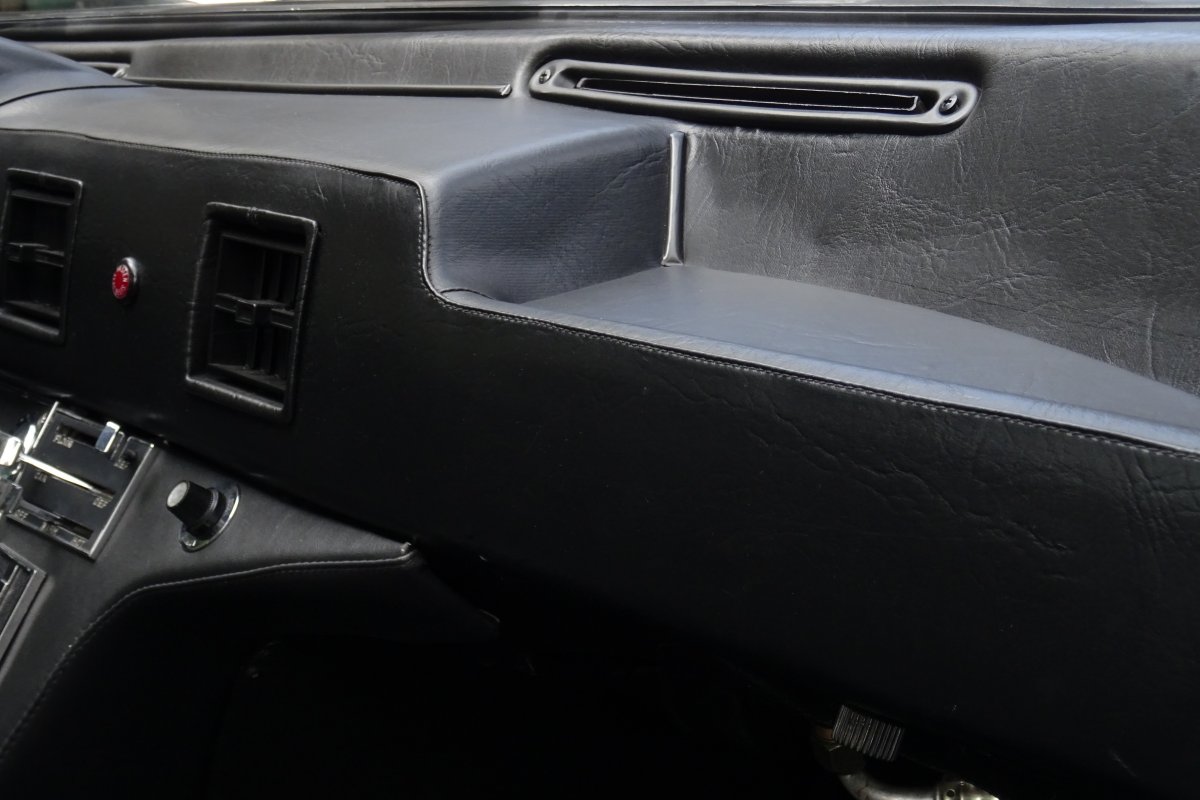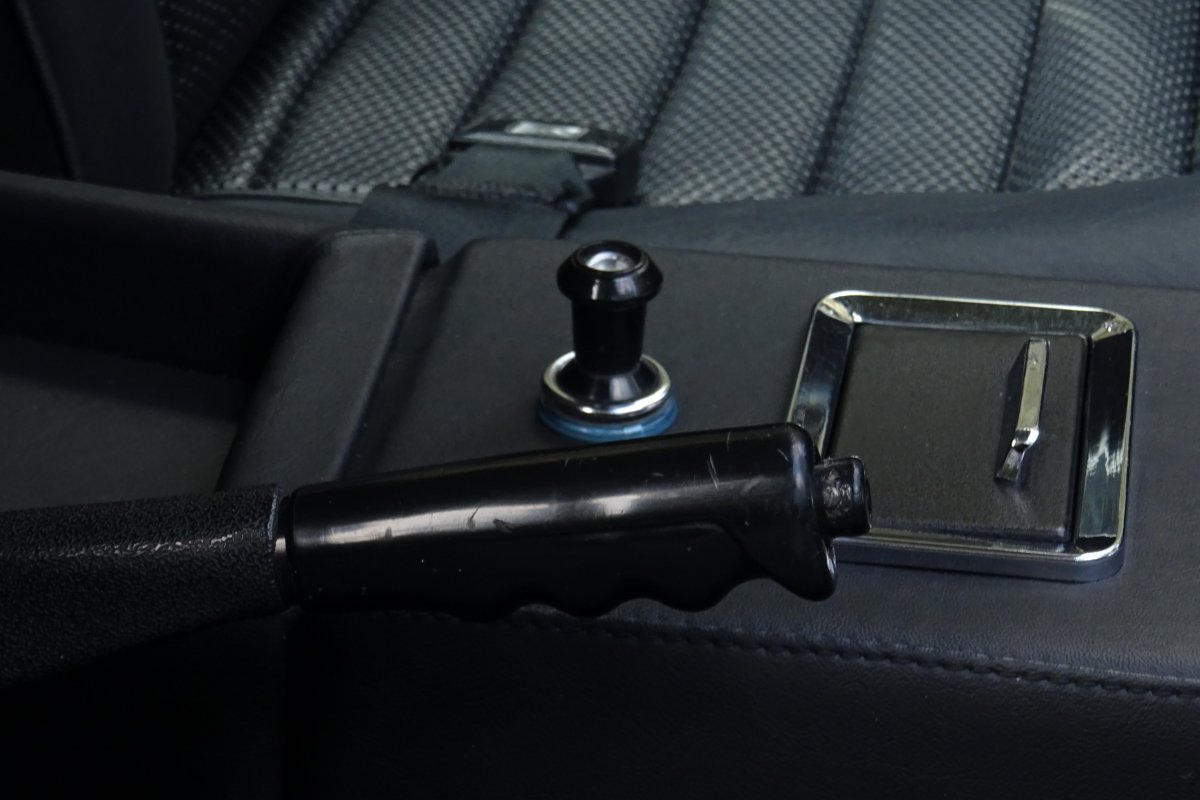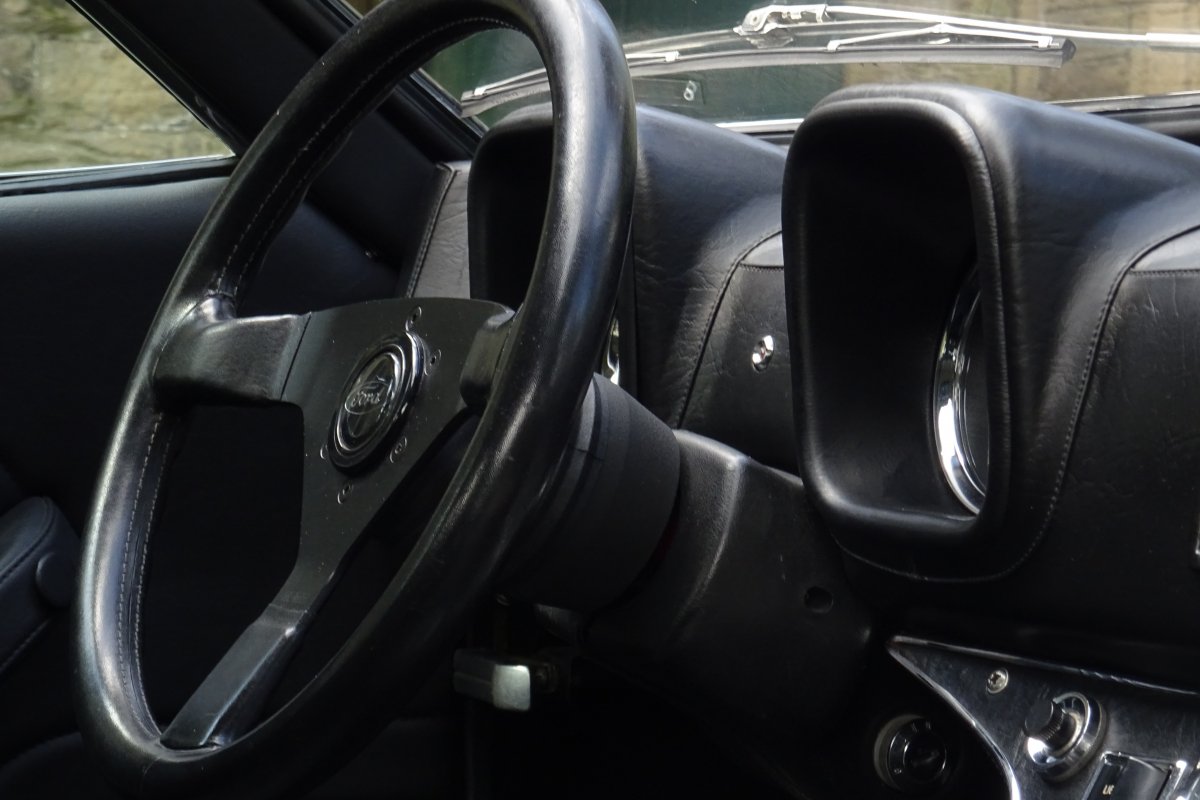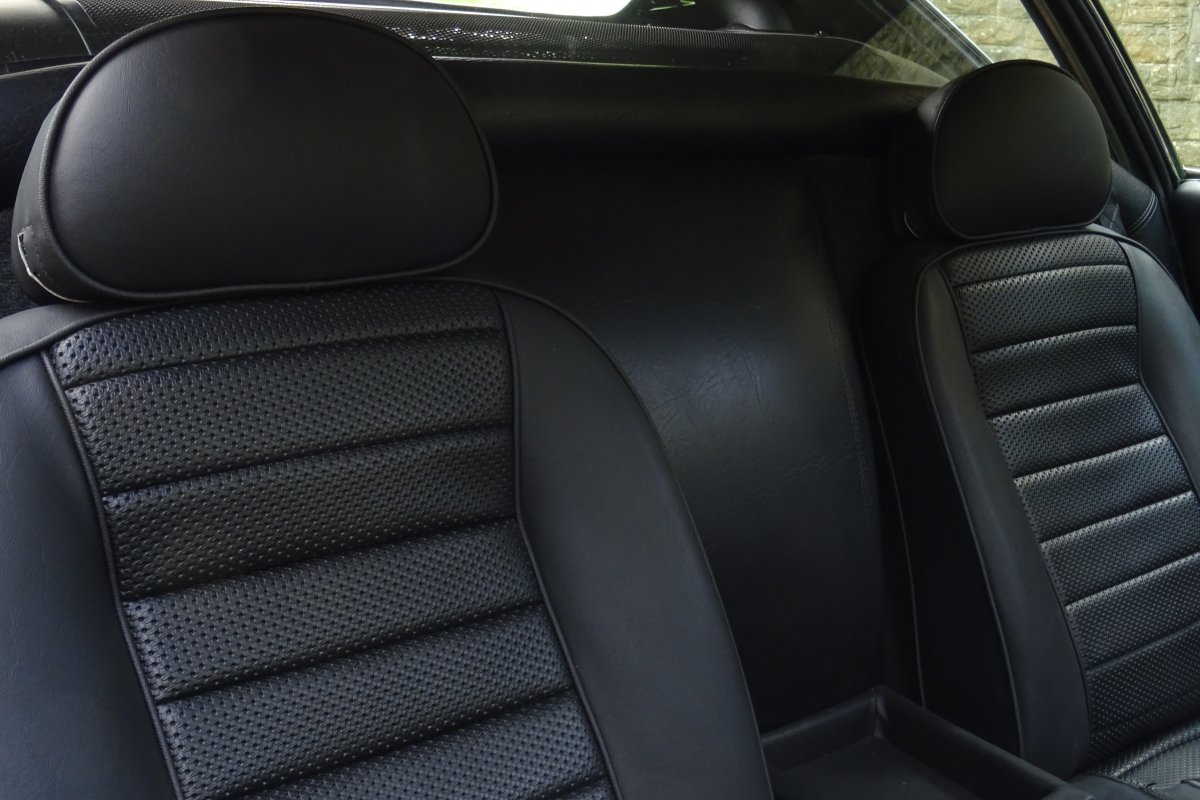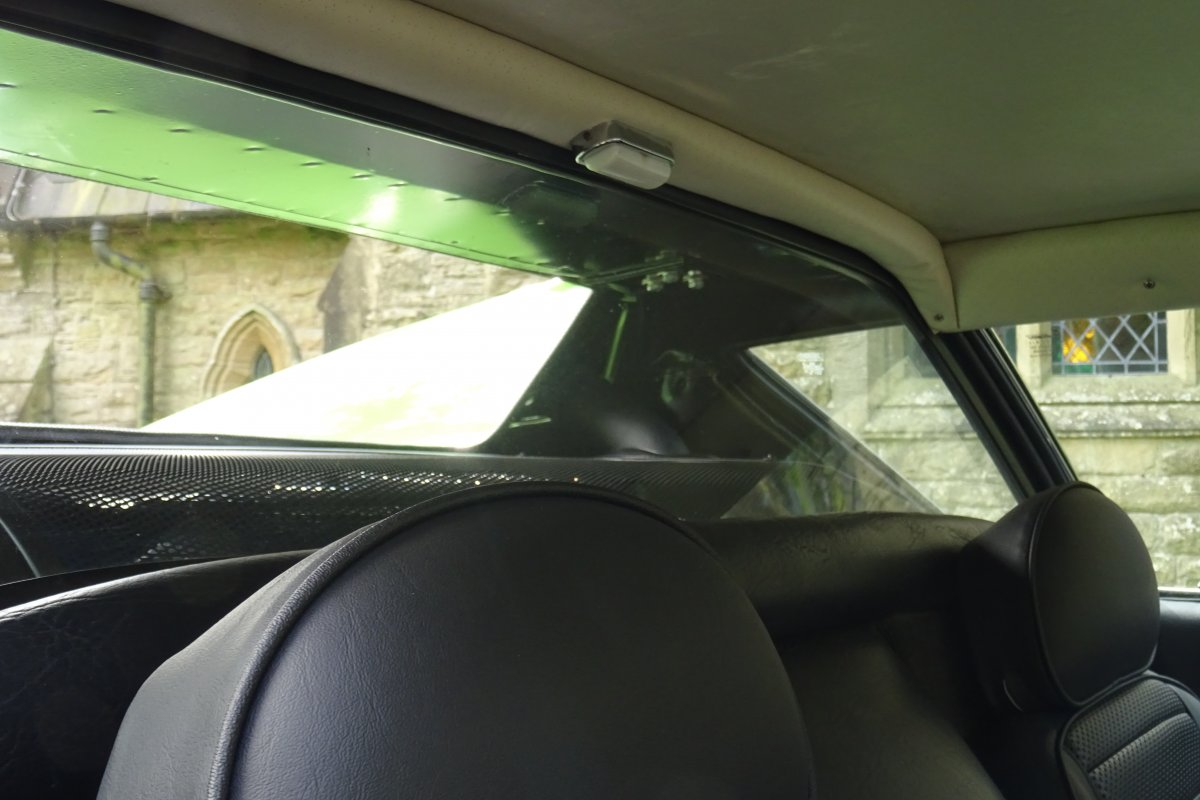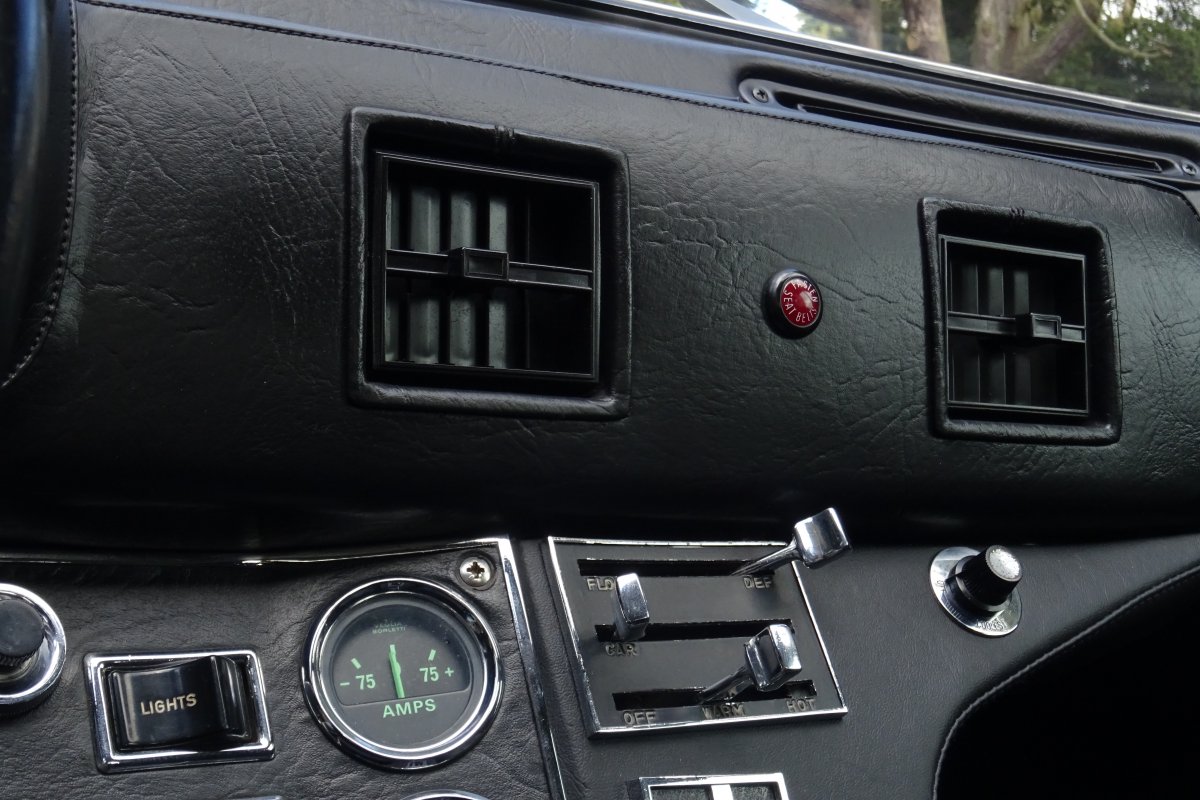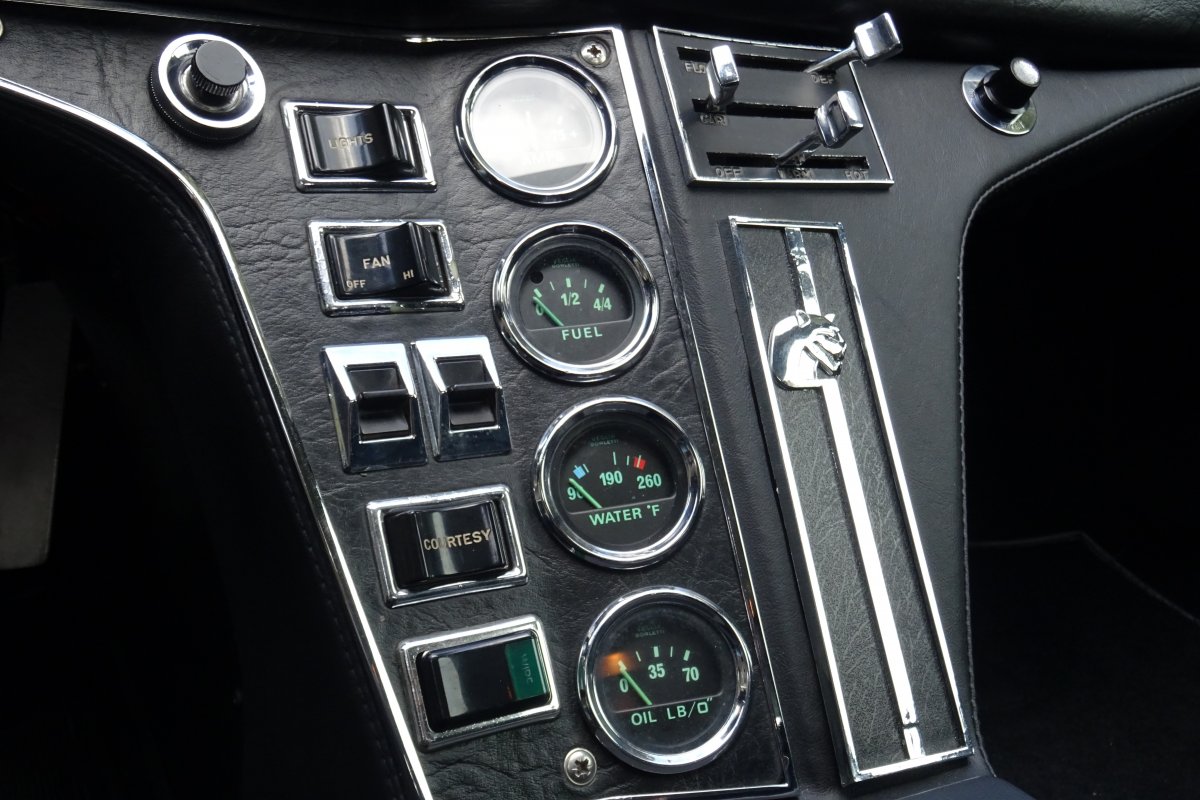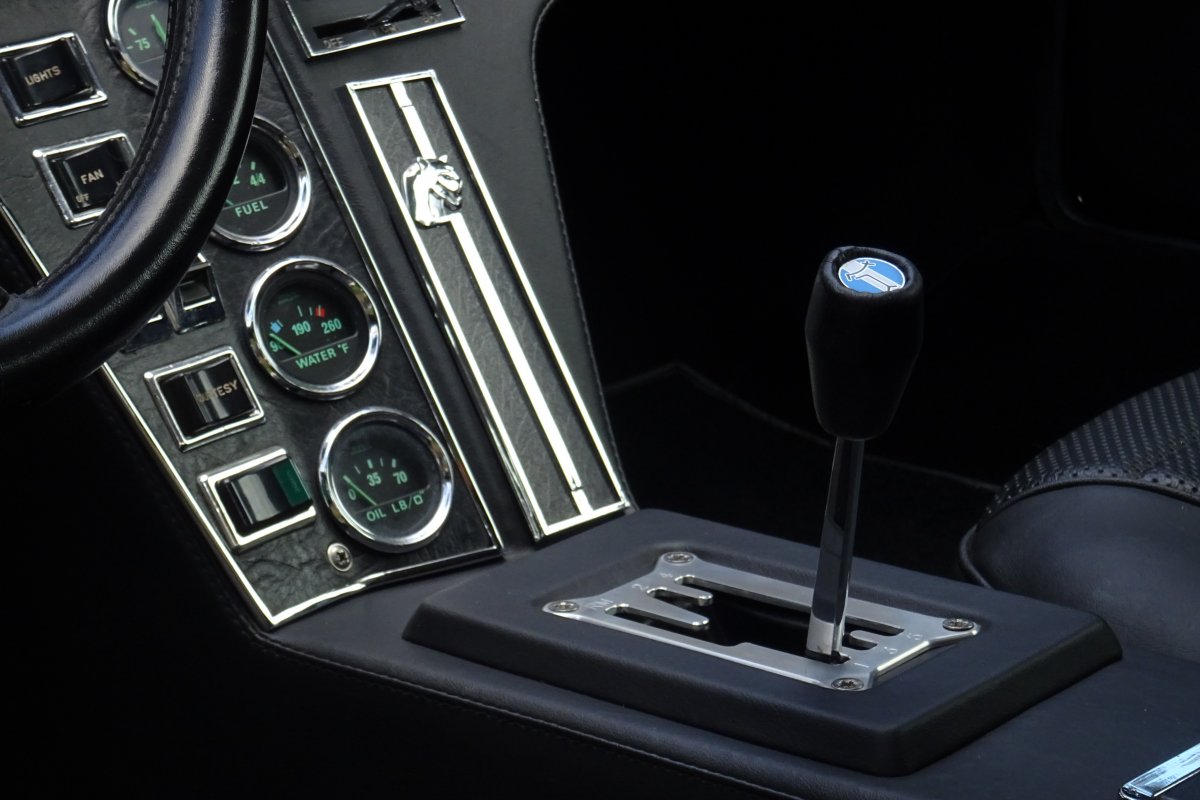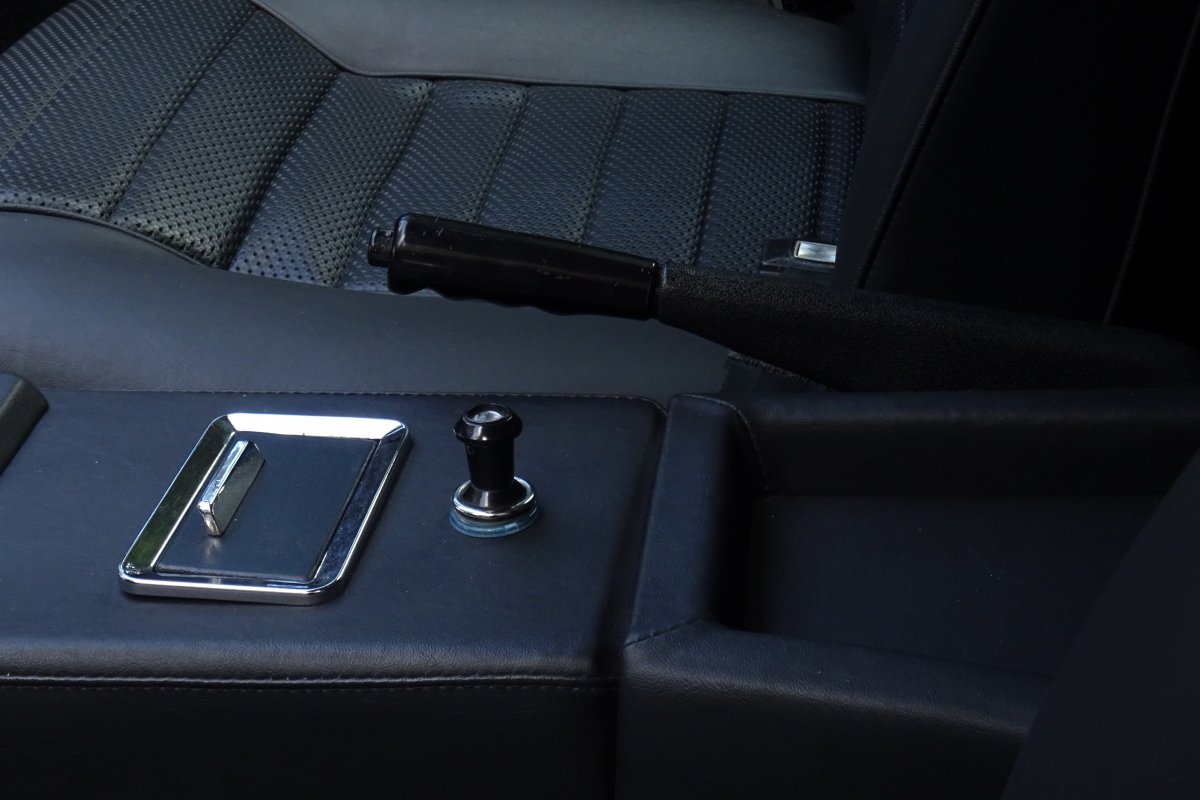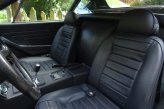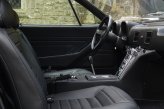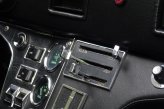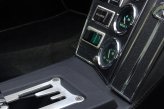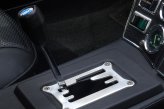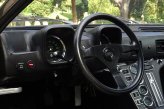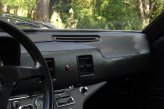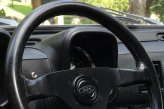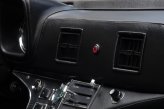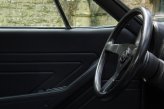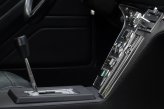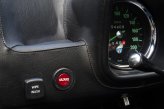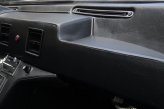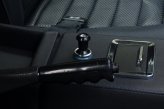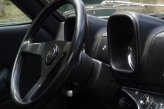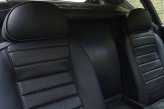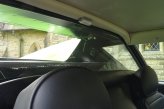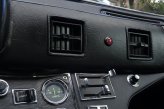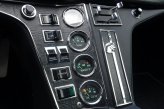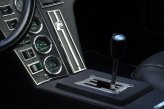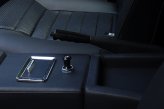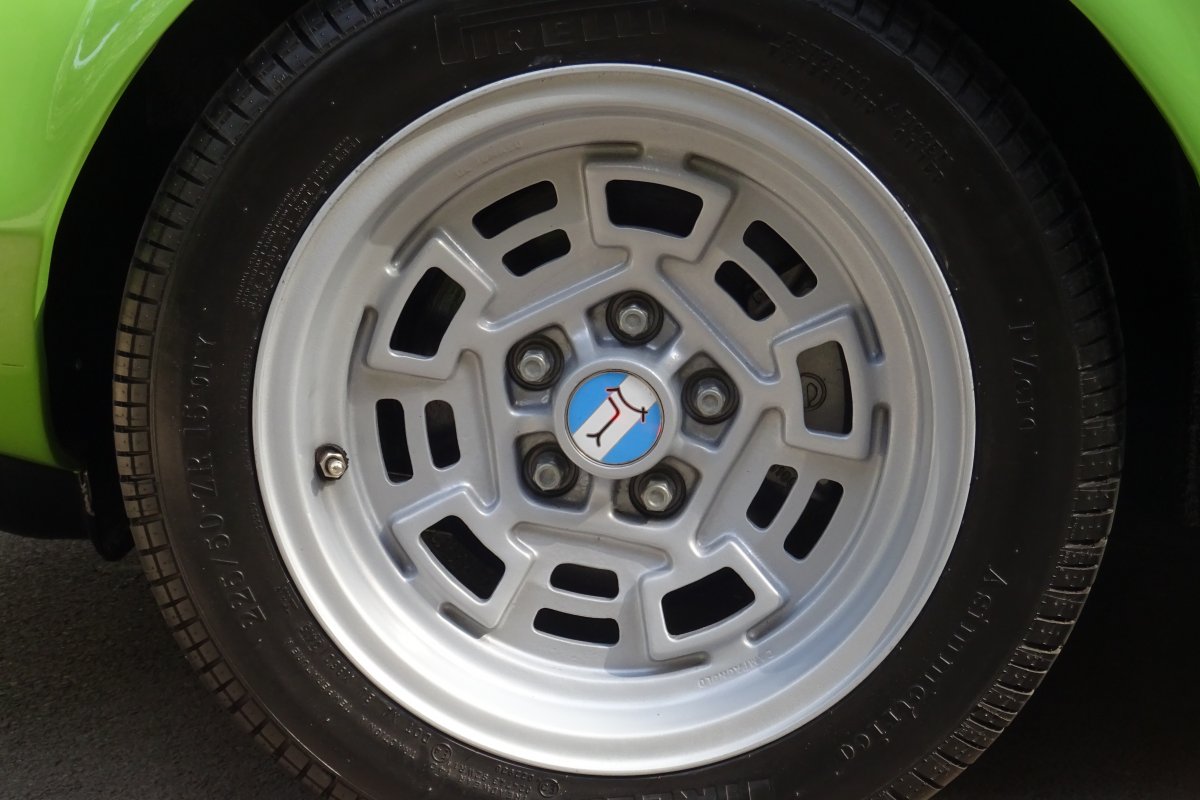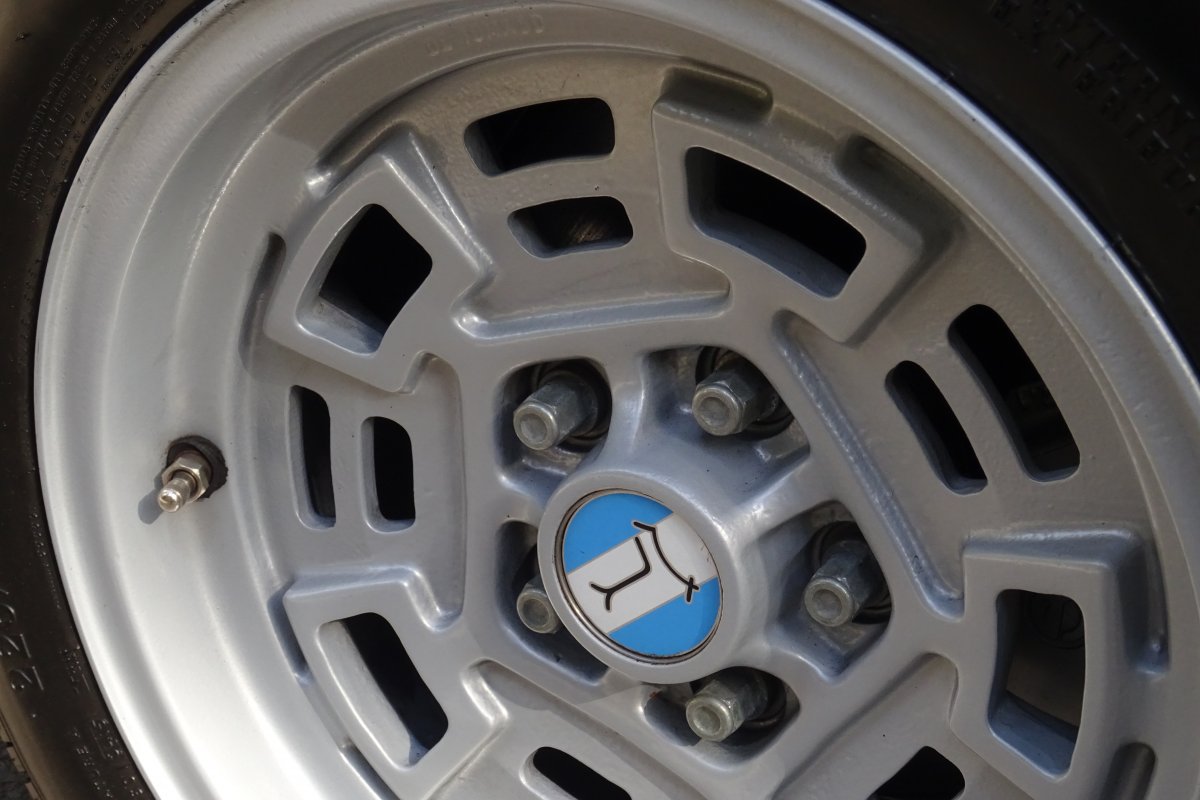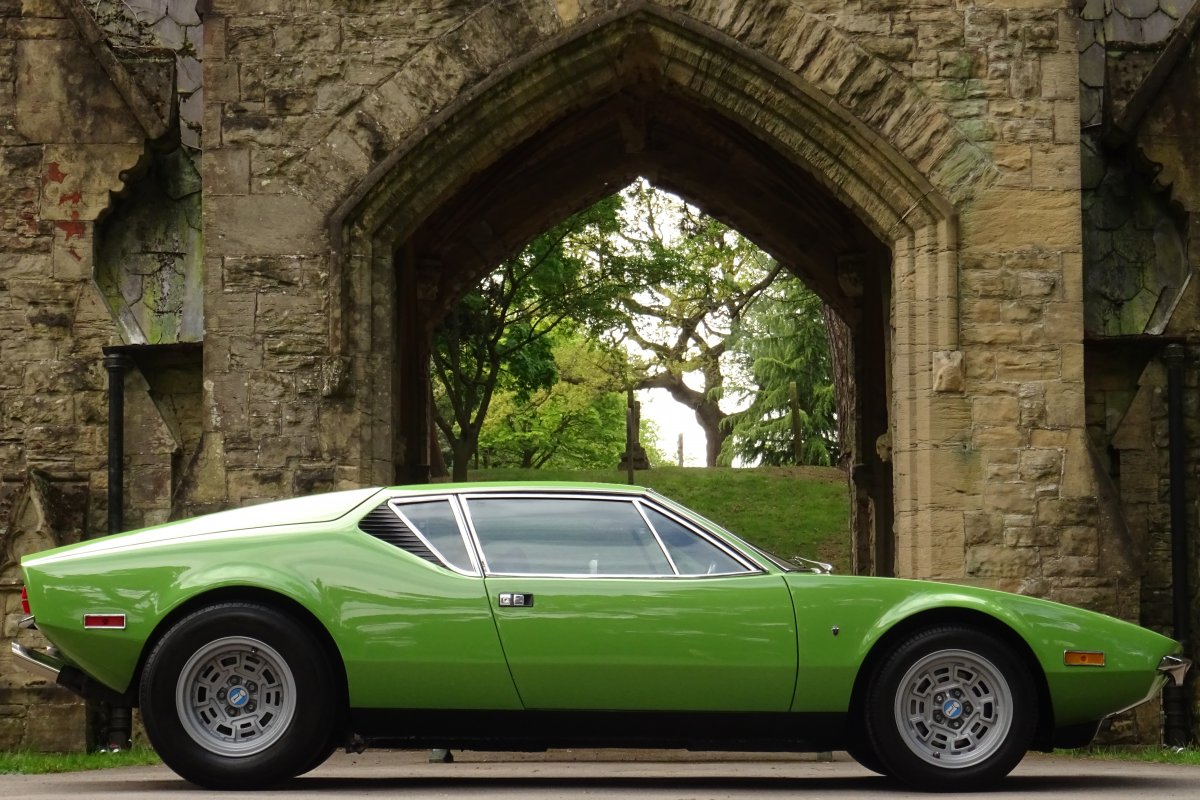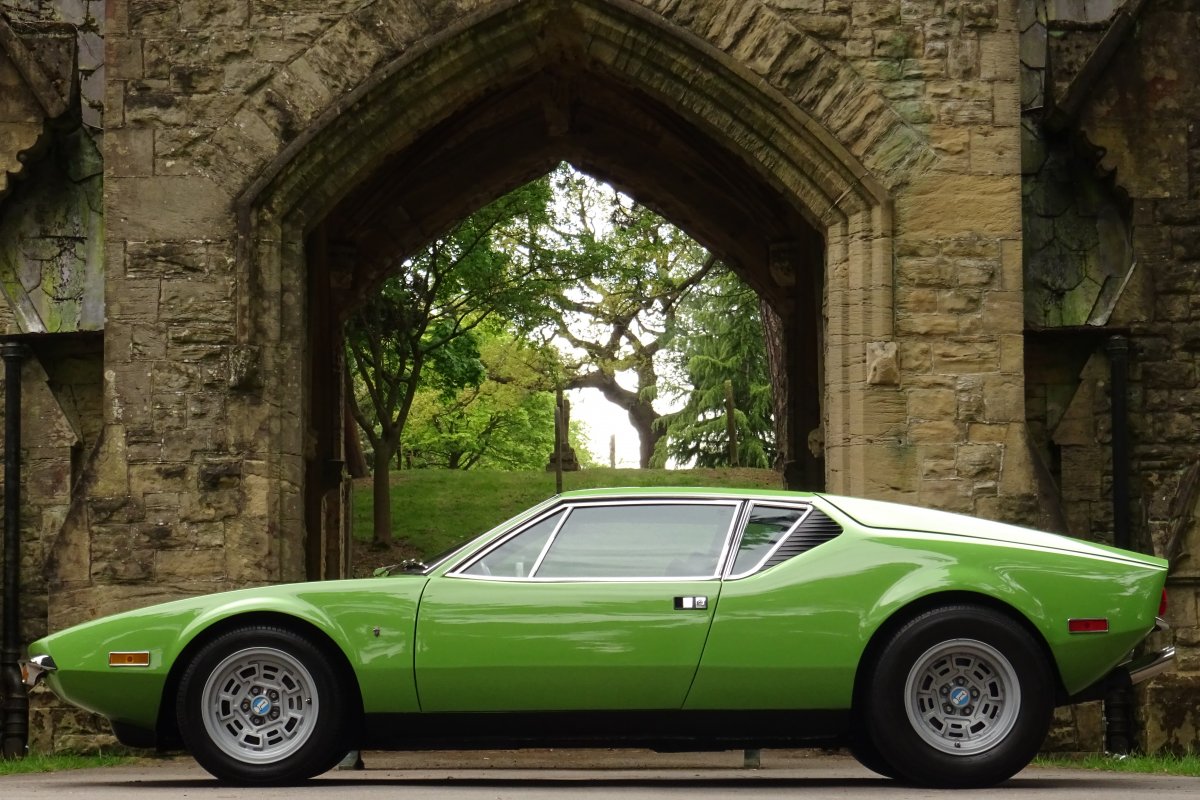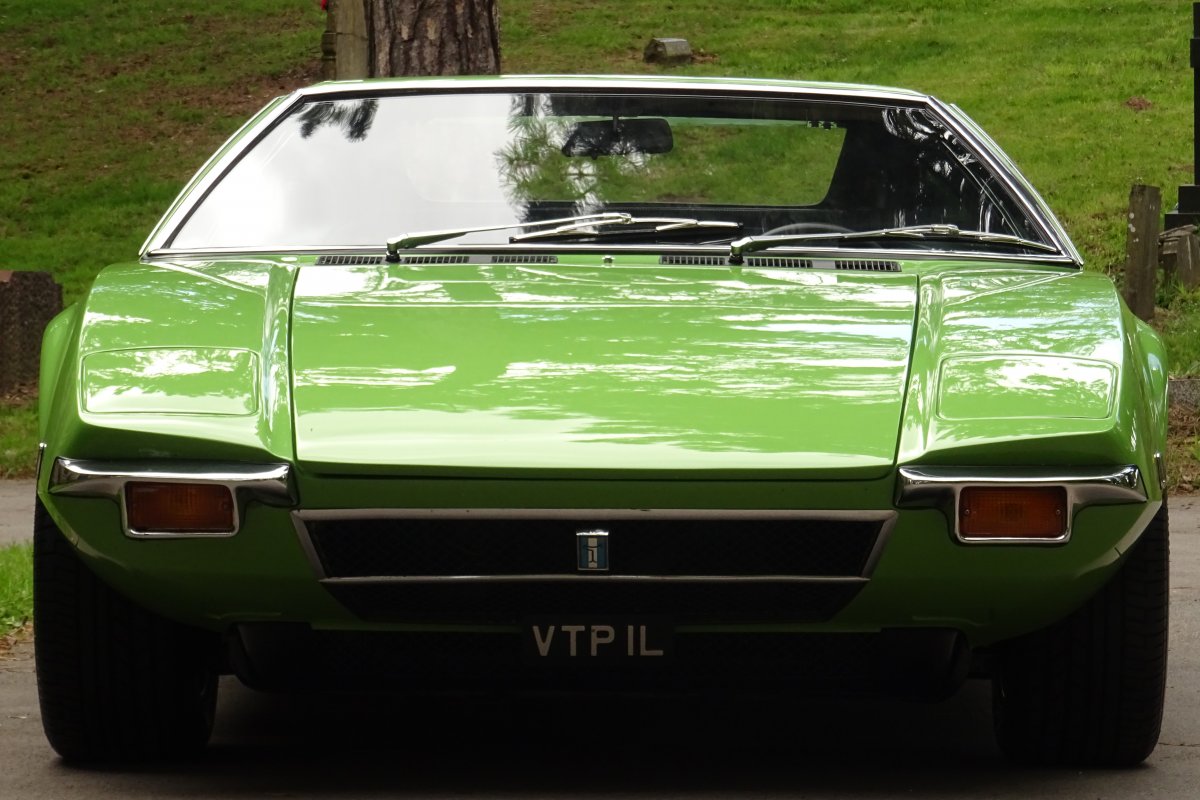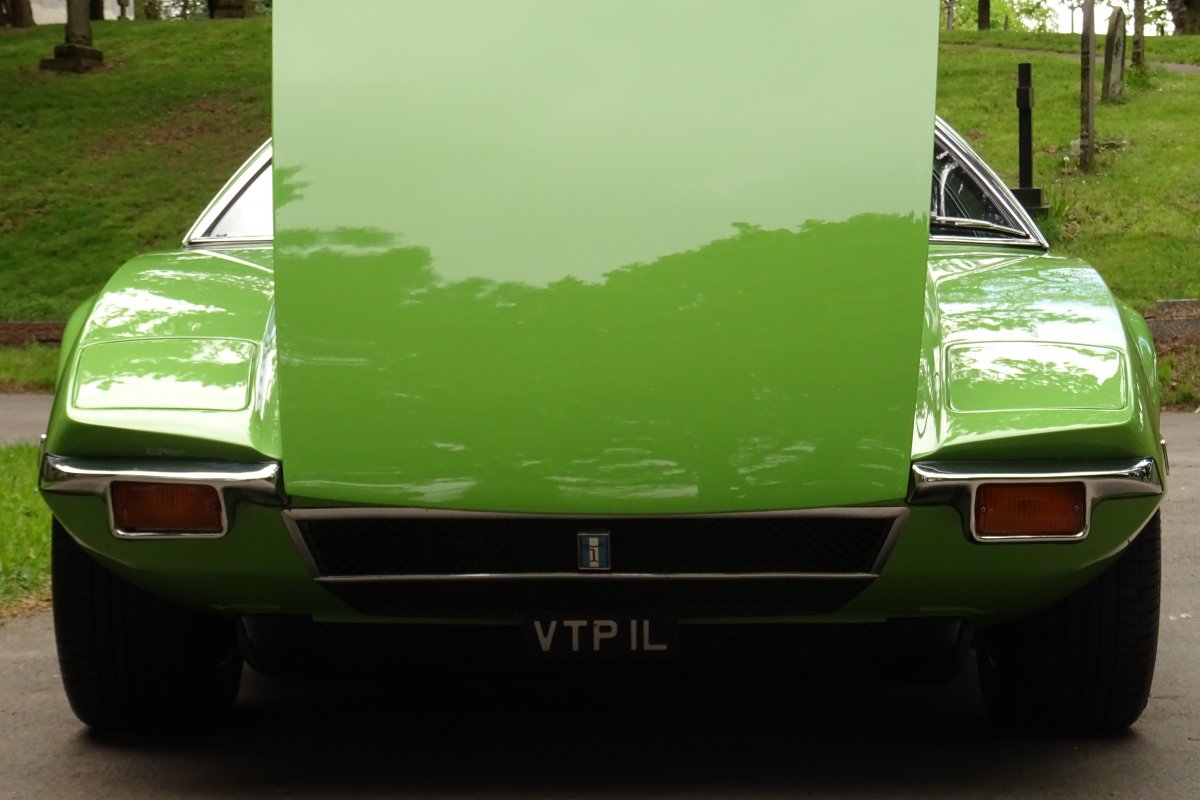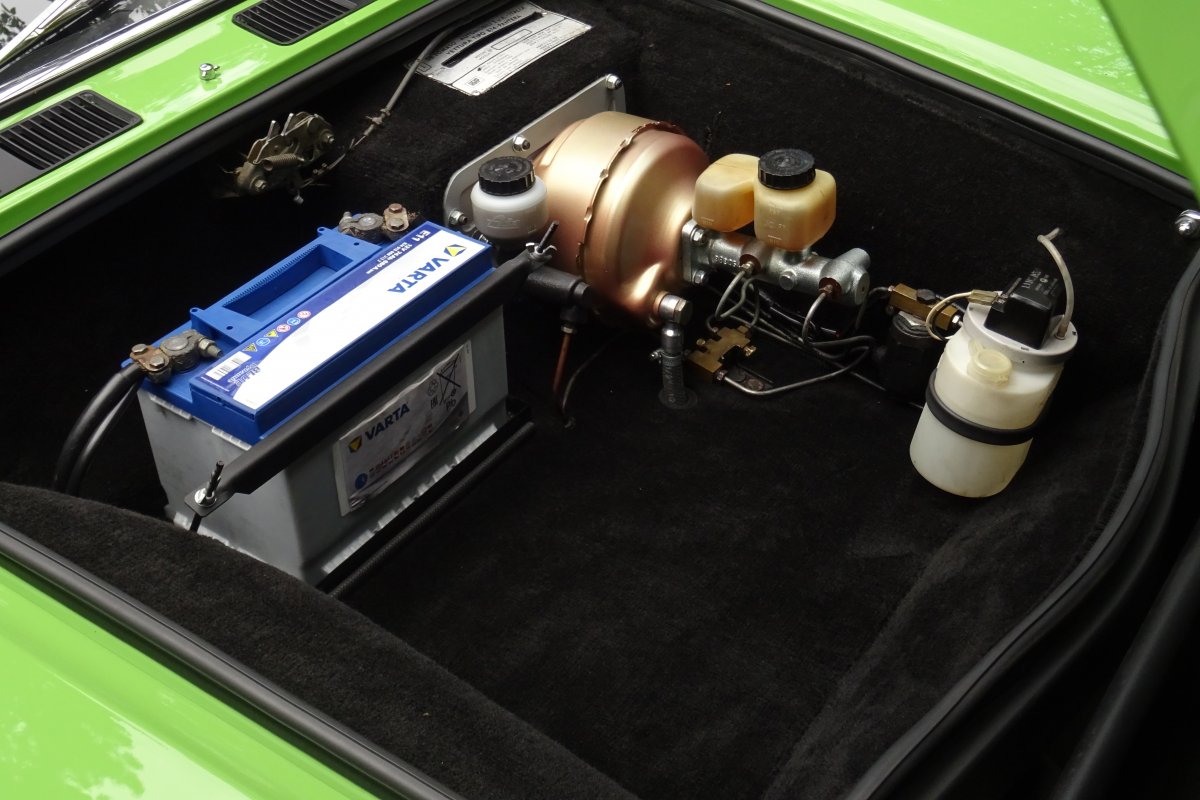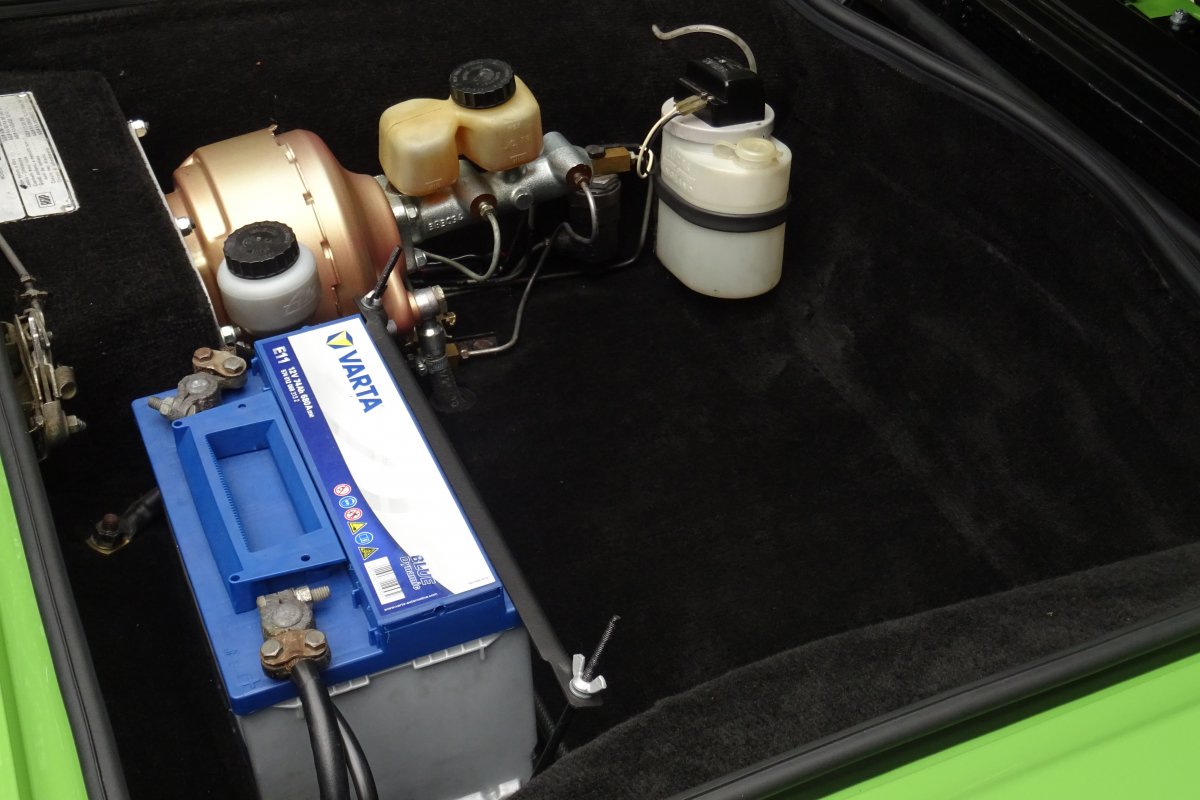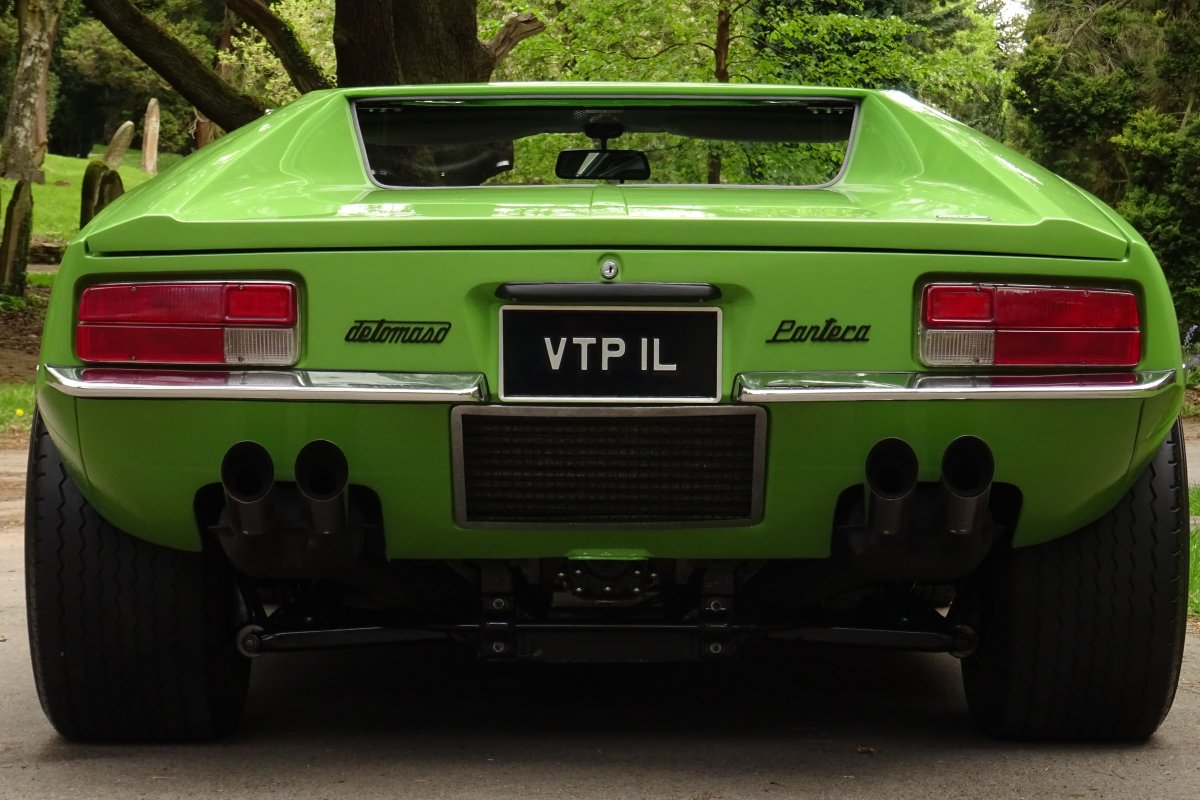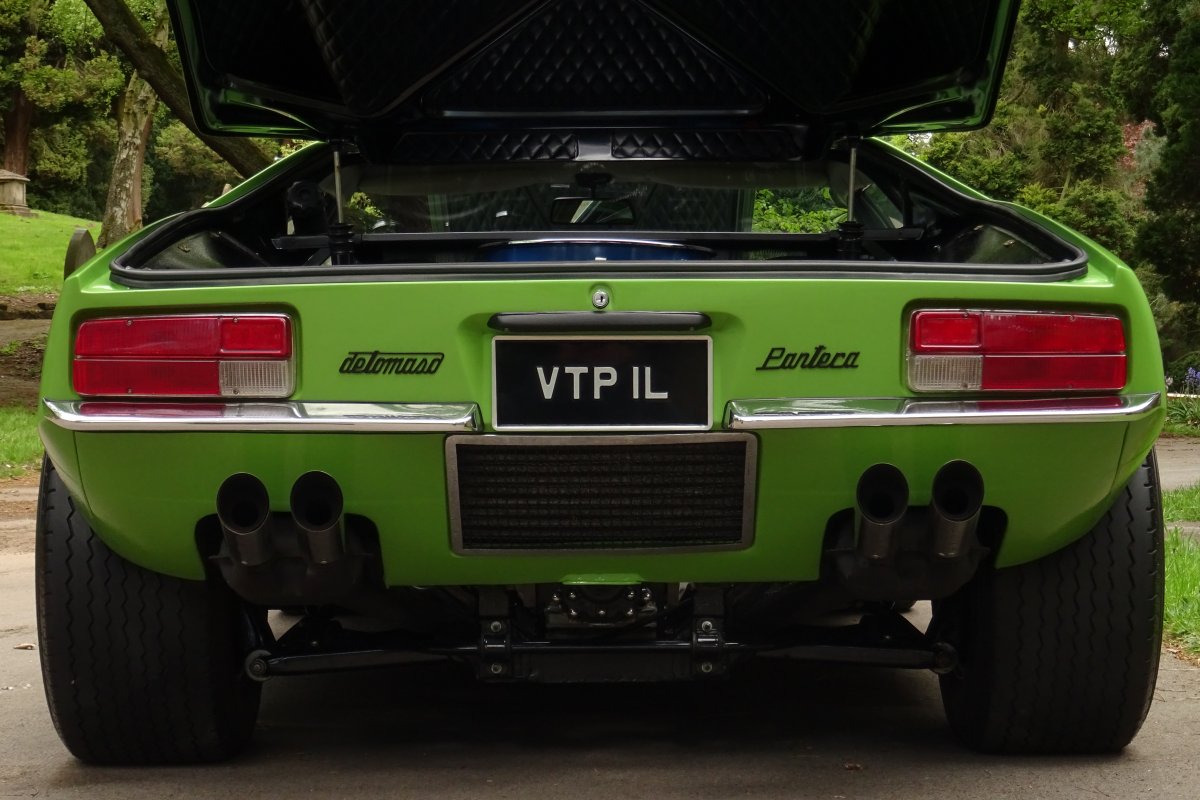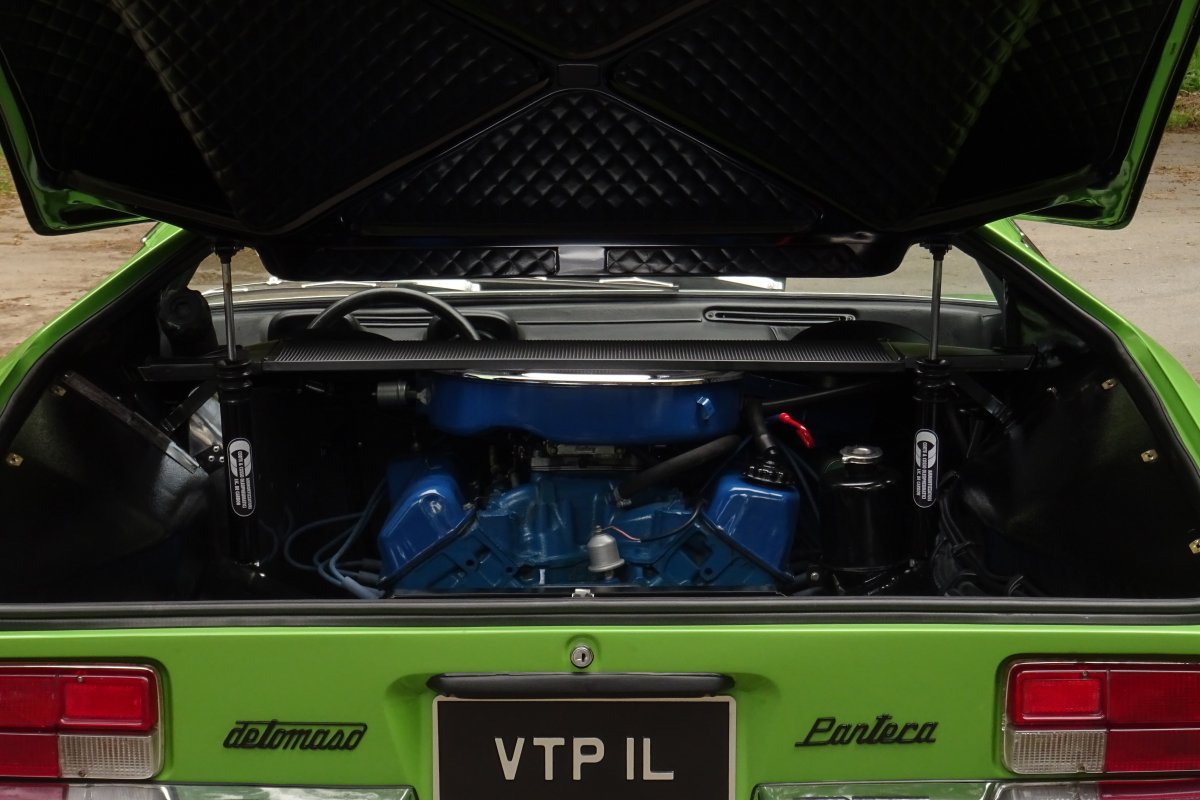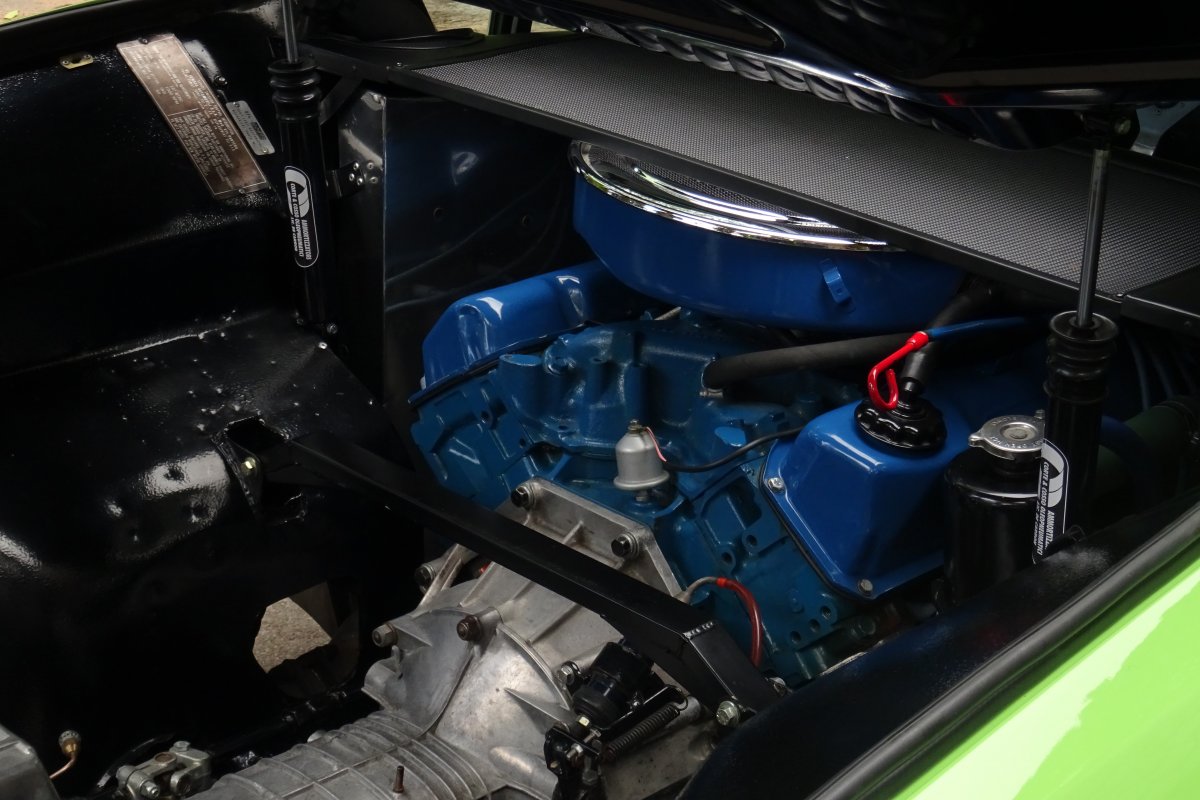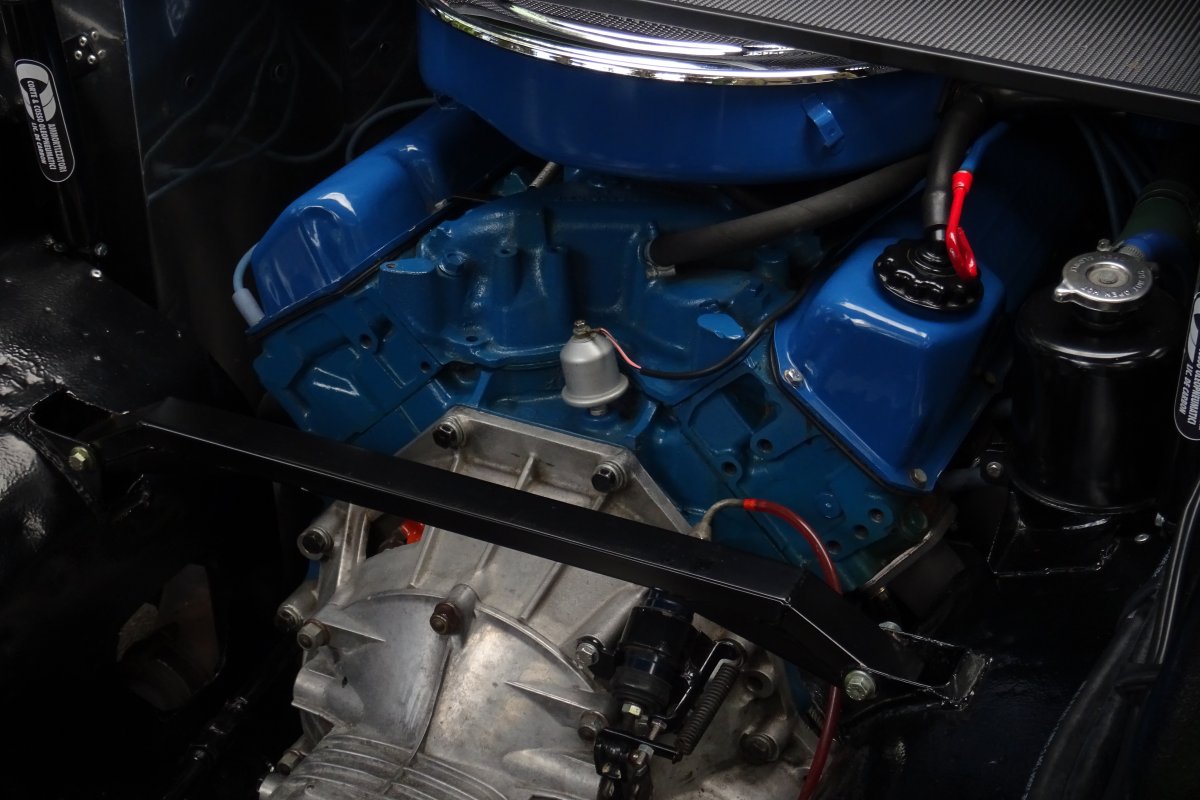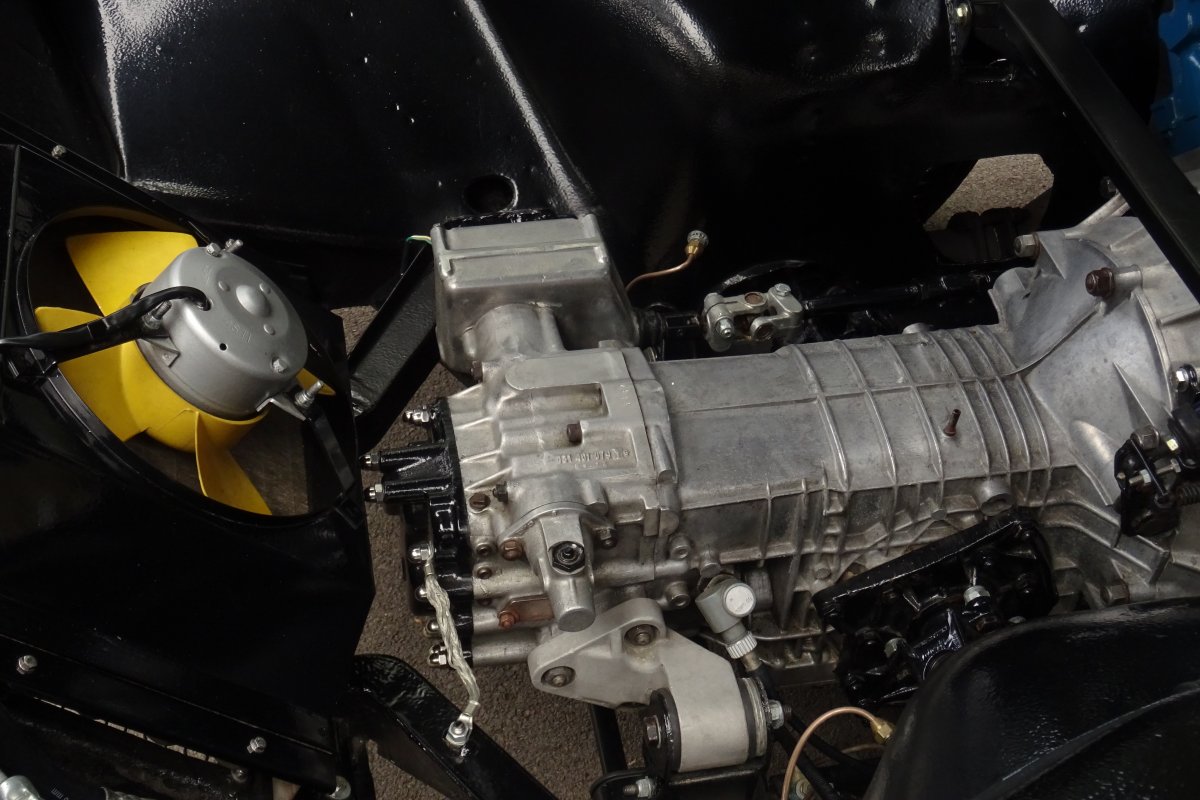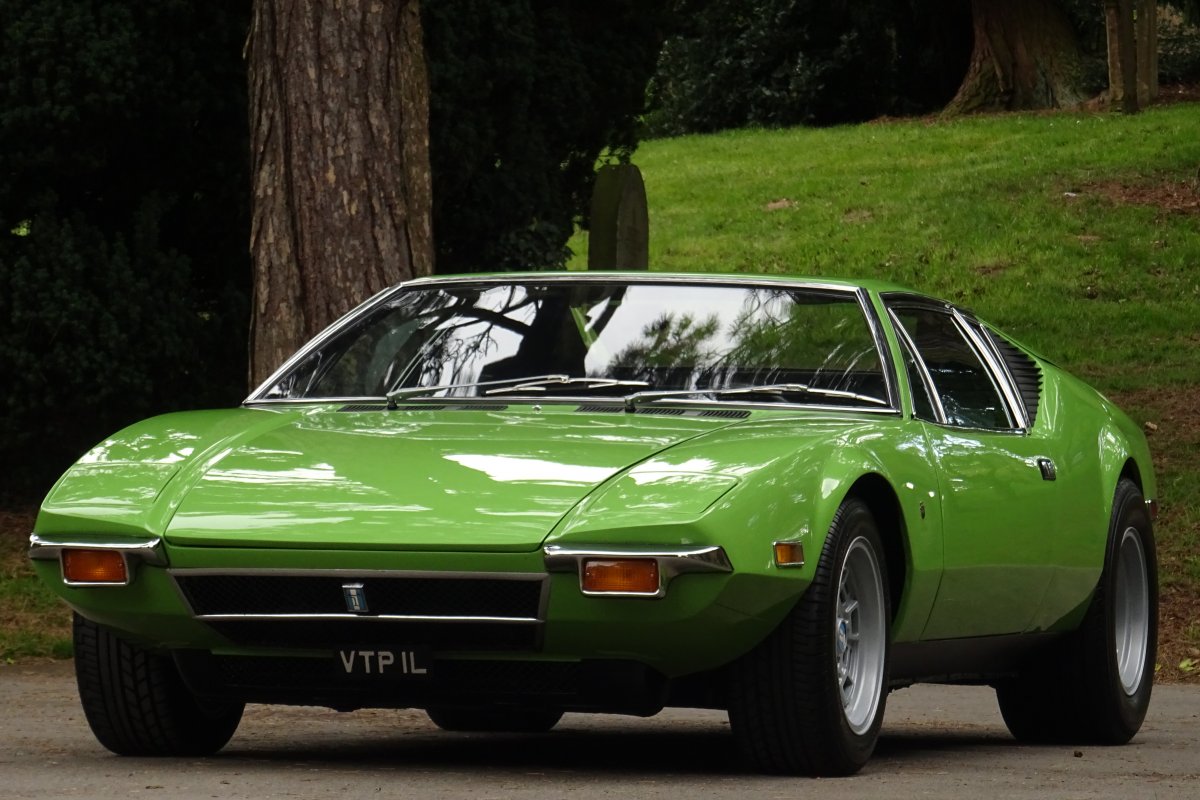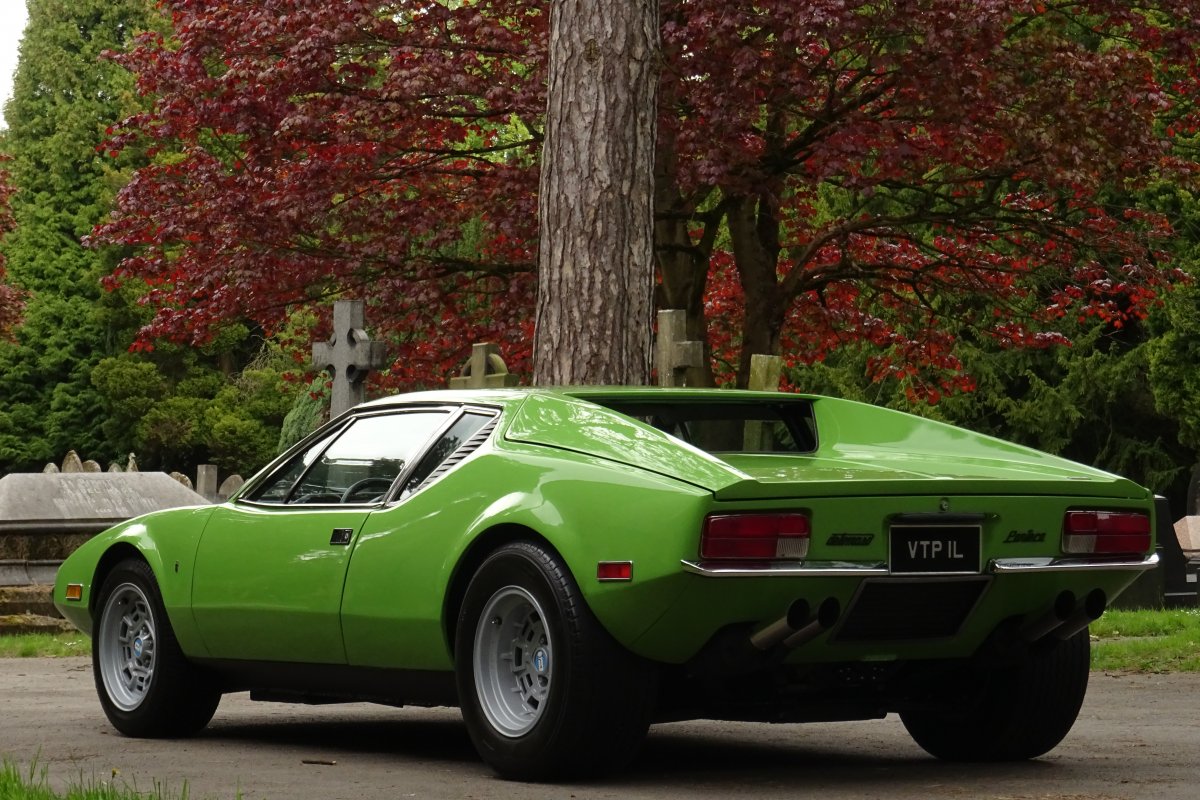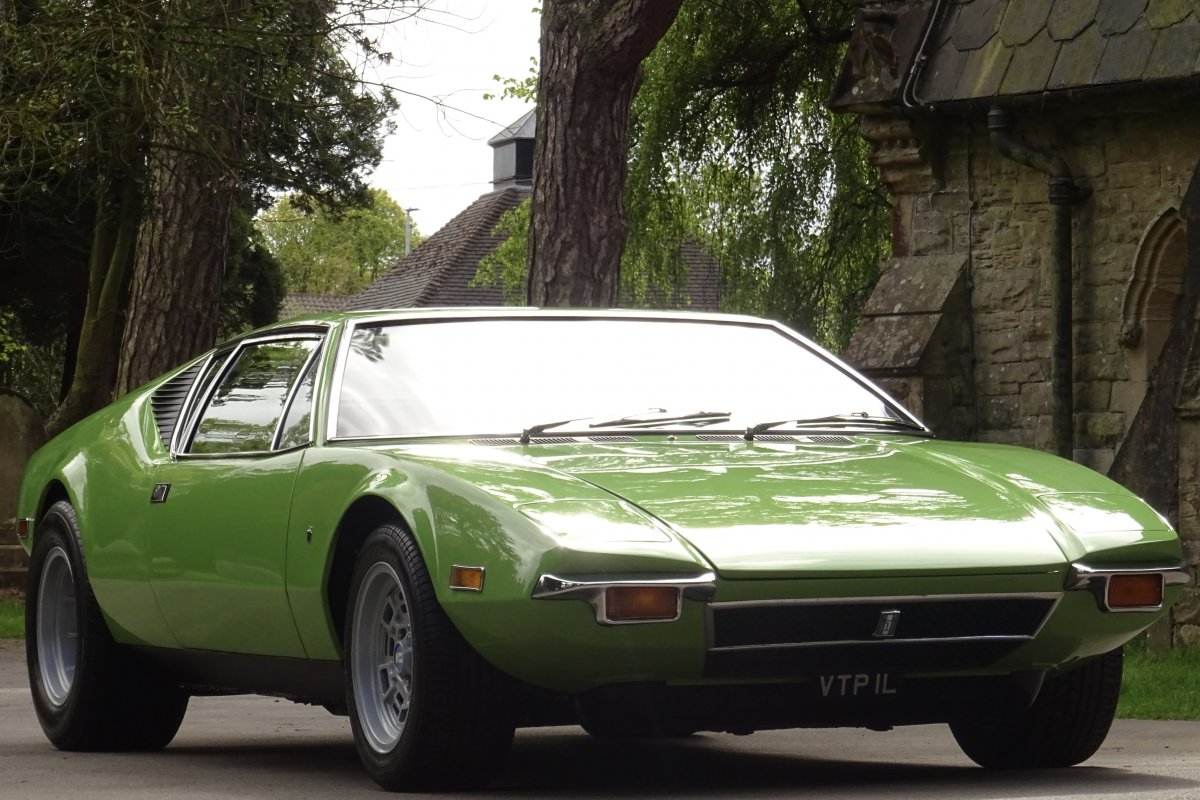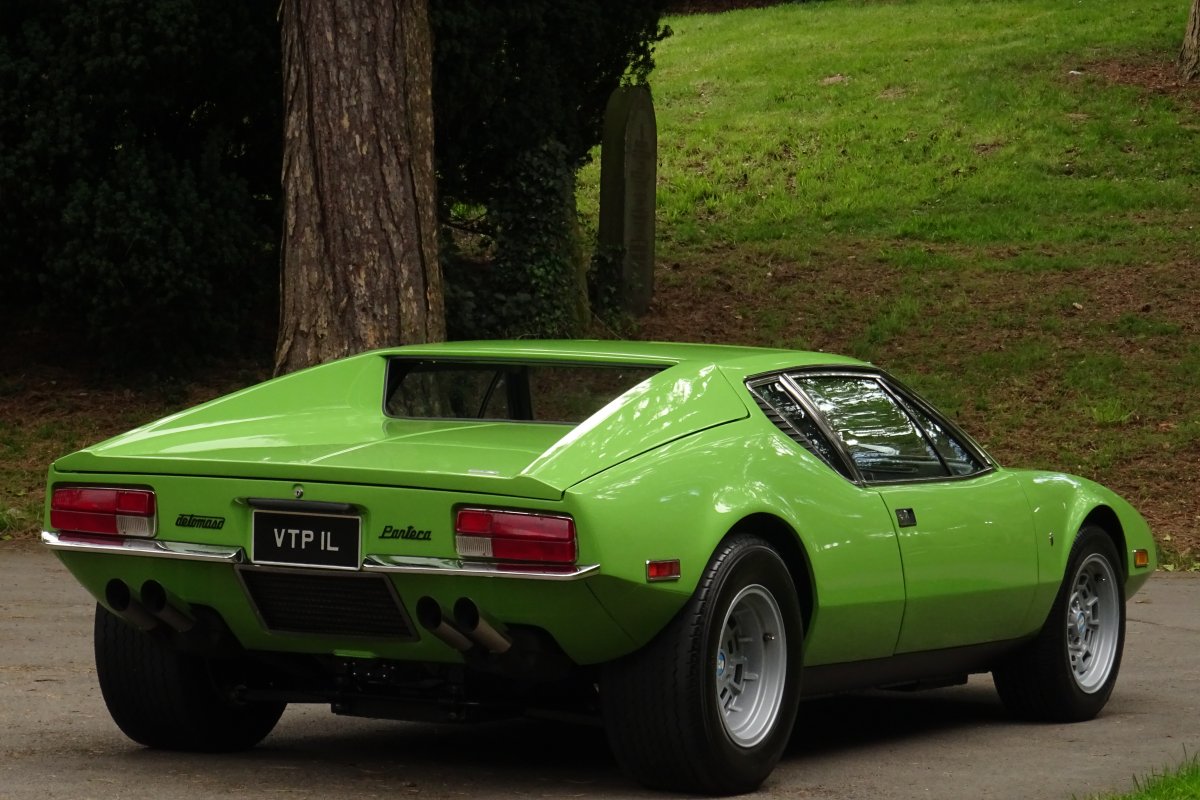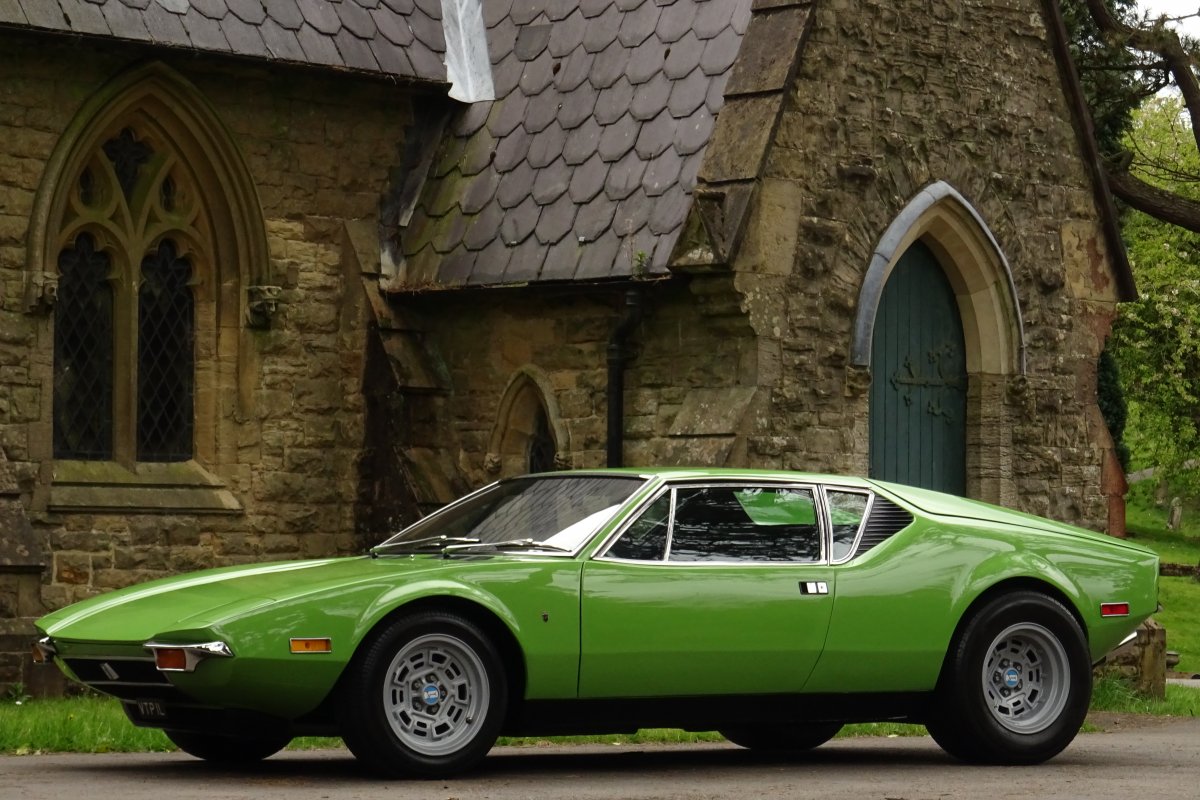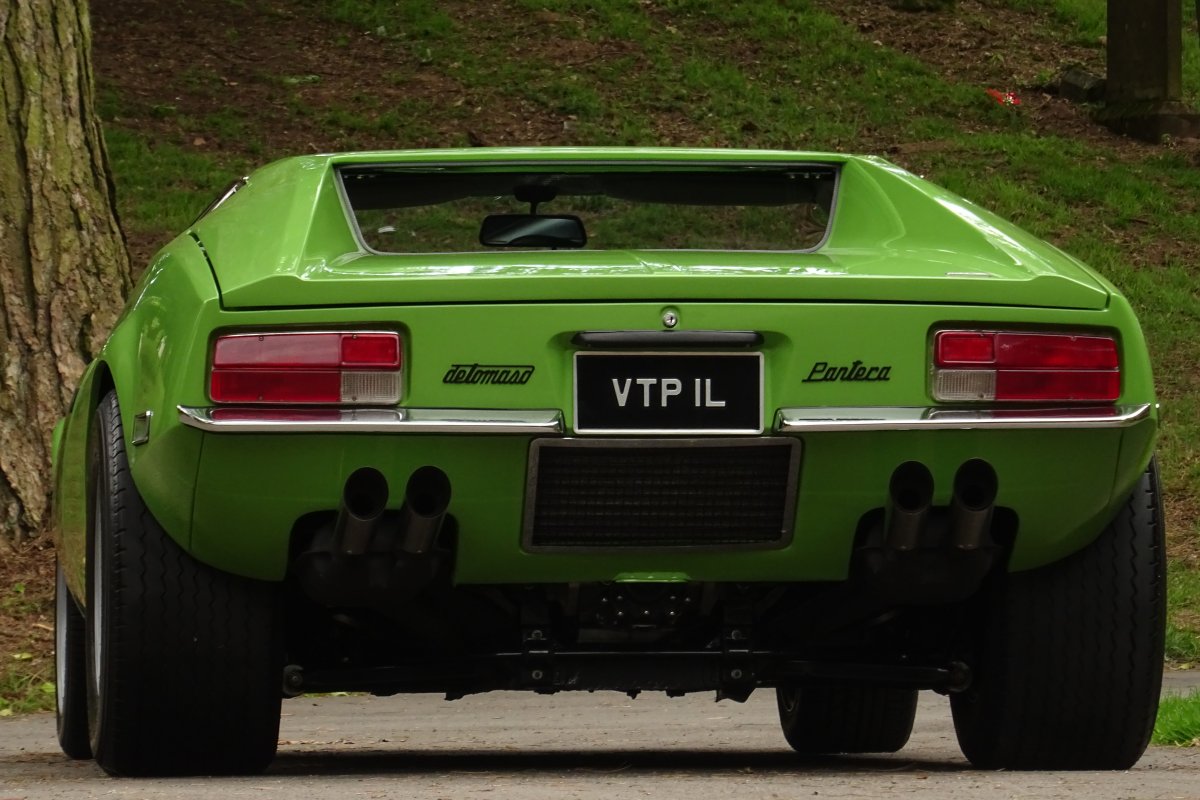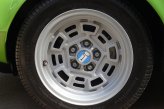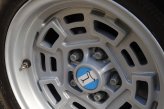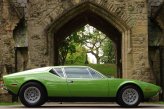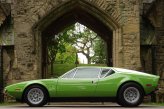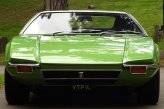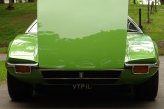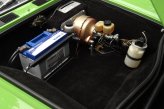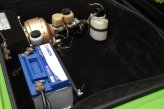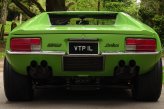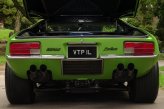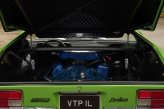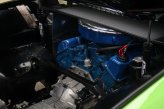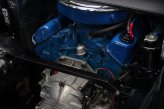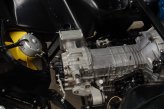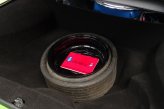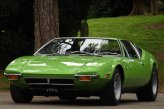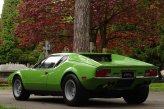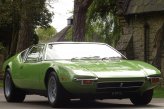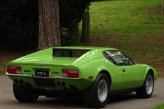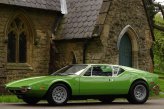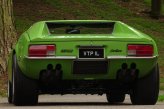The Pantera was designed by the Italian design firm Ghia's American-born designer Tom Tjaarda and replaced the Mangusta. Unlike the Mangusta, which employed a steel backbone chassis, the Pantera's chassis was of a steel monocoque design, the first instance of De Tomaso using this construction technique. The Pantera logo included a version of Argentina's flag turned on its side with a T-shaped symbol that was the brand used by De Tomaso's Argentinian cattle ranching ancestors. The logo has the colours of the Argentinean flag not because of De Tomaso's ancestors but because the company's founder, Alejandro De Tomaso, was born and raised in Argentina. The car debuted in Modena in March 1970 and was presented at the 1970 New York Motor Show a few weeks later. Approximately a year later the first production cars were sold, and production was increased to three per day.
The slat-backed seats which had attracted criticism at the New York Auto Show were replaced by more conventional body-hugging sports seats in the production cars. Reflecting its makers' transatlantic ambitions, the Pantera came with an abundance of standard features which appeared exotic in Europe, such as electric windows, air conditioning and even doors that buzz when opened. By the time the Pantera reached production stage, the interior was in most respects well sorted, although resting an arm on the central console could lead to inadvertently activating the poorly located cigarette lighter !
The first 1971 Pantera models were powered by a 5.8 L (351 cu in) Ford Cleveland V8 engine having a power output of 335 PS (246 kW; 330 hp). The high torque provided by the Ford engine reduced the need for excessive gear changing at low speeds: this made the car much less demanding to drive in urban conditions than many of the locally built offerings.
The ZF transaxle used in the Mangusta was also used for the Pantera: a passenger in an early Pantera recorded that the mechanical noises emanating from the transaxle were more intrusive than the well restrained engine noise. Another Italian car that shares the ZF transaxle is the Maserati Bora, also launched in 1971 although not yet available for sale. Power-assisted four-wheel disc brakes and rack and pinion steering were all standard equipment on the Pantera. The 1971 Pantera could accelerate to 97 km/h (60 mph) in 5.5 seconds according to Car and Driver.
Chassis number THPNMD03903 Was unearthed in California by Mike Drew (renowned Pantera expert), this vehicle had been stuck in an open-ended barn for many years. Although not having been moved in over 3 decades, it was found to be in magnificent condition and with some careful attention, the powerful V8 engine was brought back to life.
Acquired by Roger Brotton and shipped back to the Three Point Four workshop, the Pantera underwent a full restoration. As a result of its singular storage conditions, the bodywork was rust free and the exterior paintwork was resprayed an iconic period De Tomaso factory apple green, chosen by the new owner.
Powered by a 5.8 litre V8 Cleveland engine, with its unmistakable sound, the car delivers 310 foot-pounds of torque and 310 bhp, driven through a five-speed dogleg ZF gearbox.
The engine and gearbox were completely overhauled with a new clutch, ditto the electrics and upgraded with a Pertronix unit and the Campagnolo wheels re-furbished. The interior, with its original dashboard, was renovated back to the factory standard, headlining replaced and seats returned to Pantera vinyl leatherette.
A truly exemplary vehicle, this Pantera has featured in specialist classic car magazines and at industry events and is one of only a handful of these vehicles in the U.K still enjoyed on the roads today. Supplied with 12 Months MOT, a UK V5 this matching numbers 'pre L' model is now in first class driving condition and ready to enjoyed throughout the coming summer.



